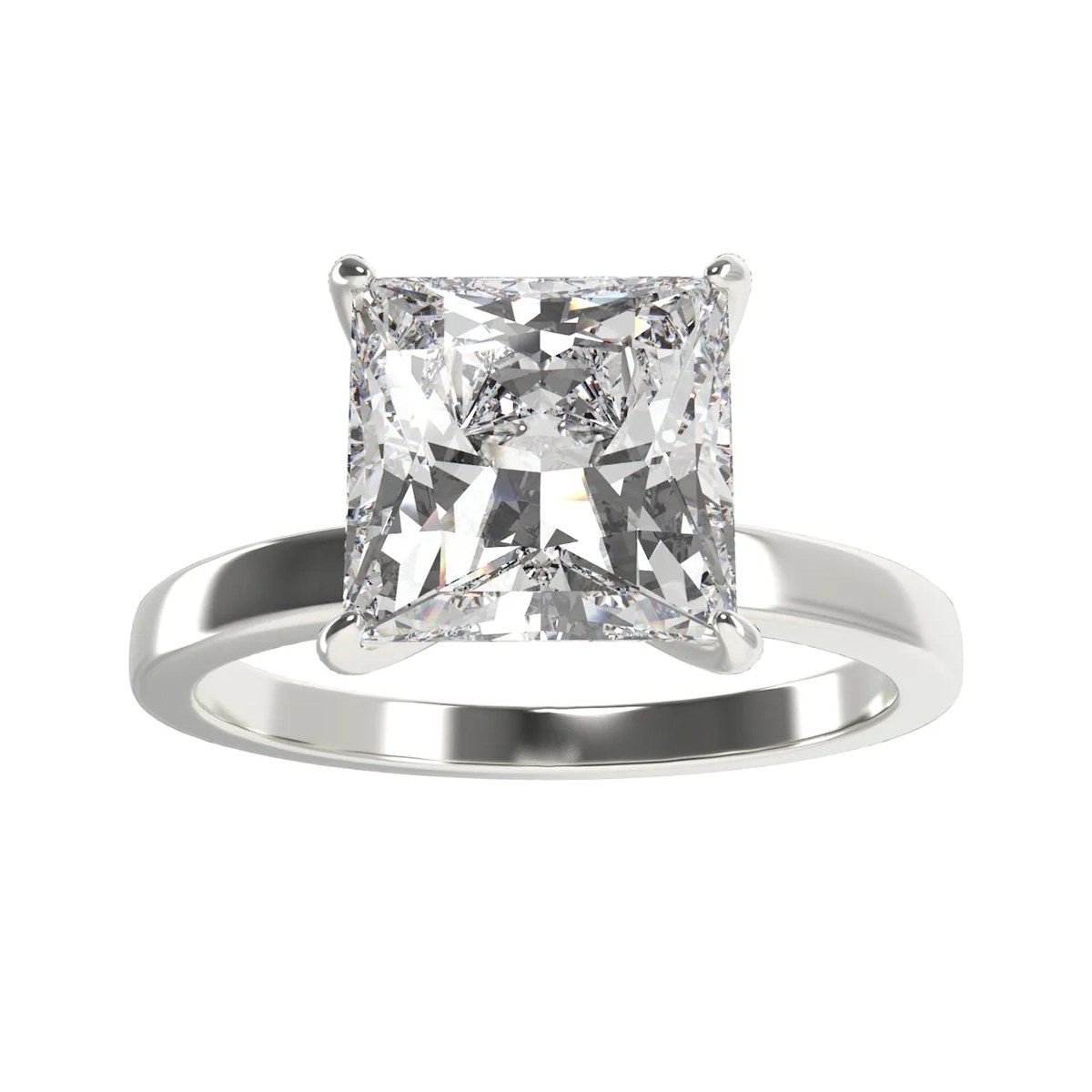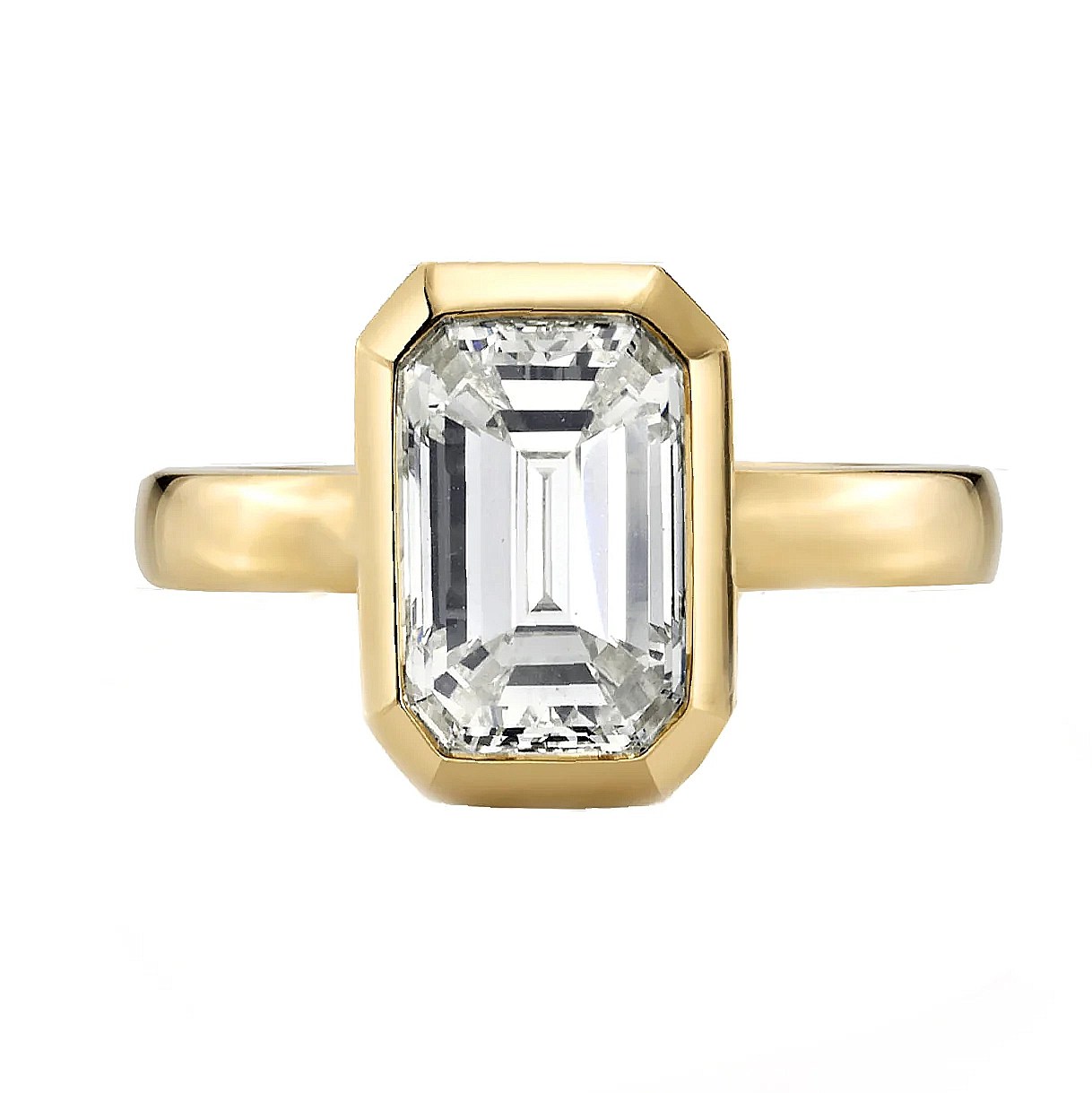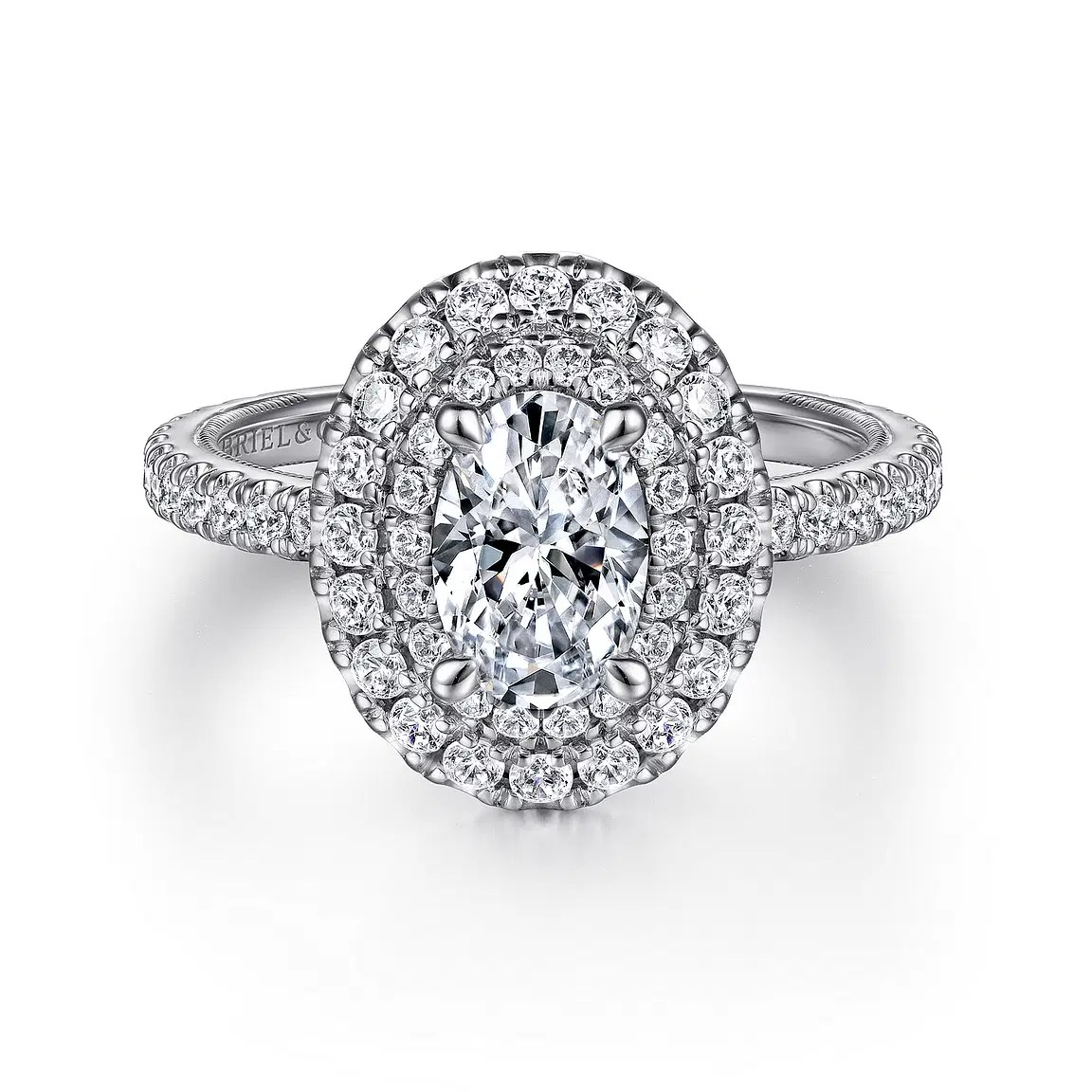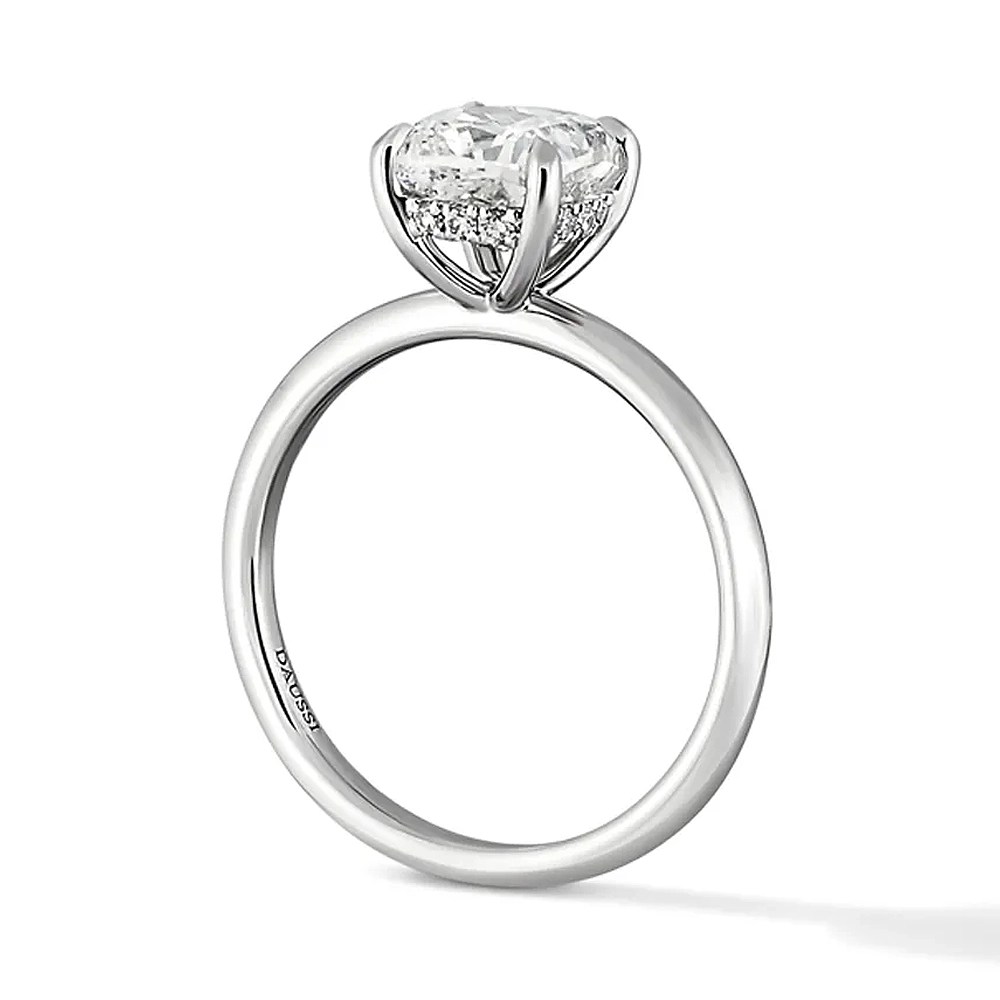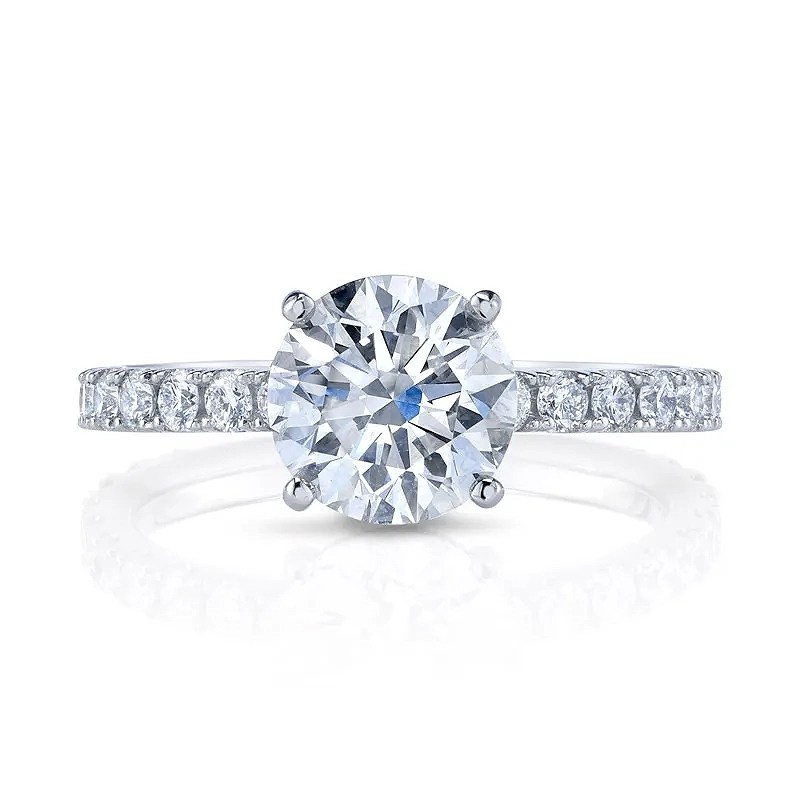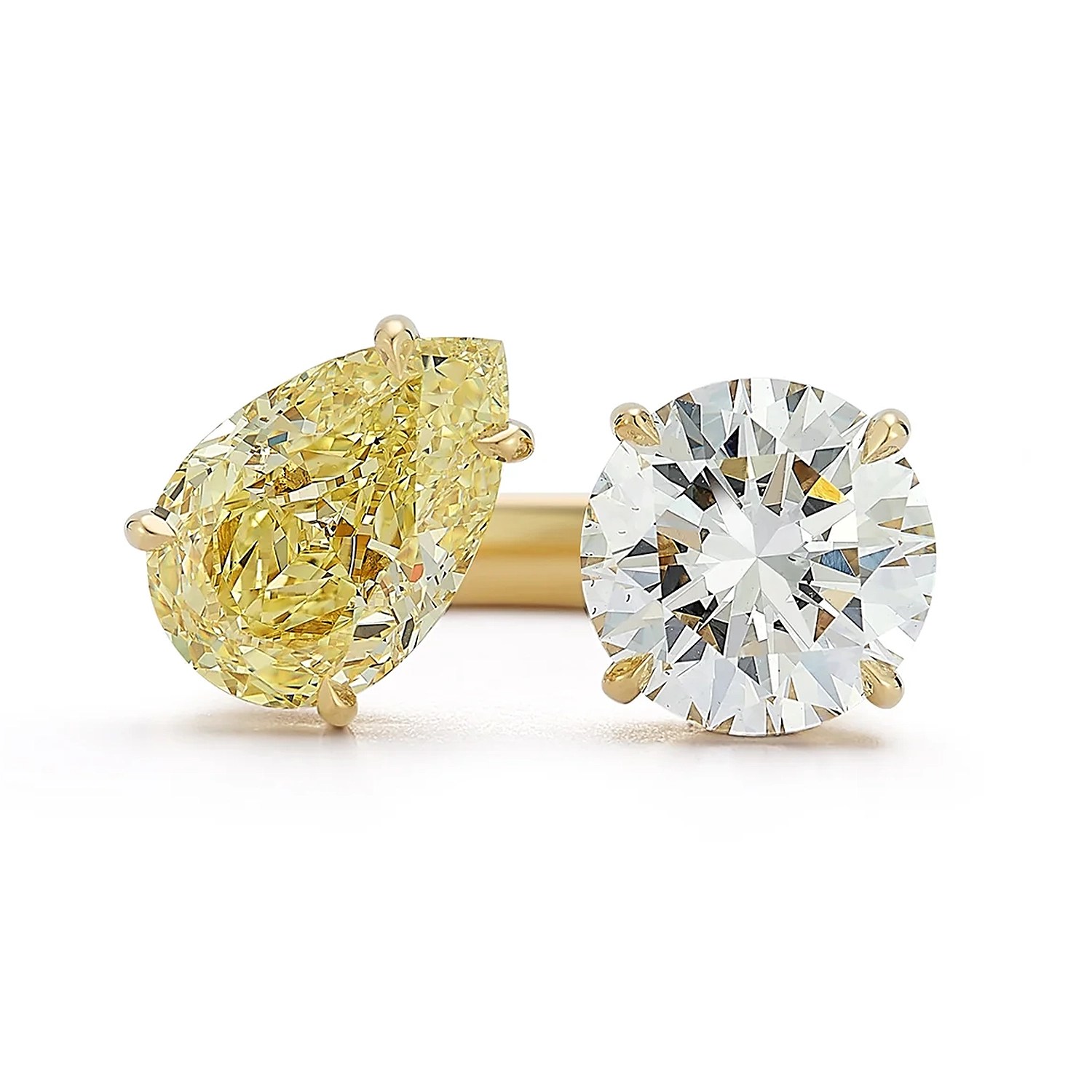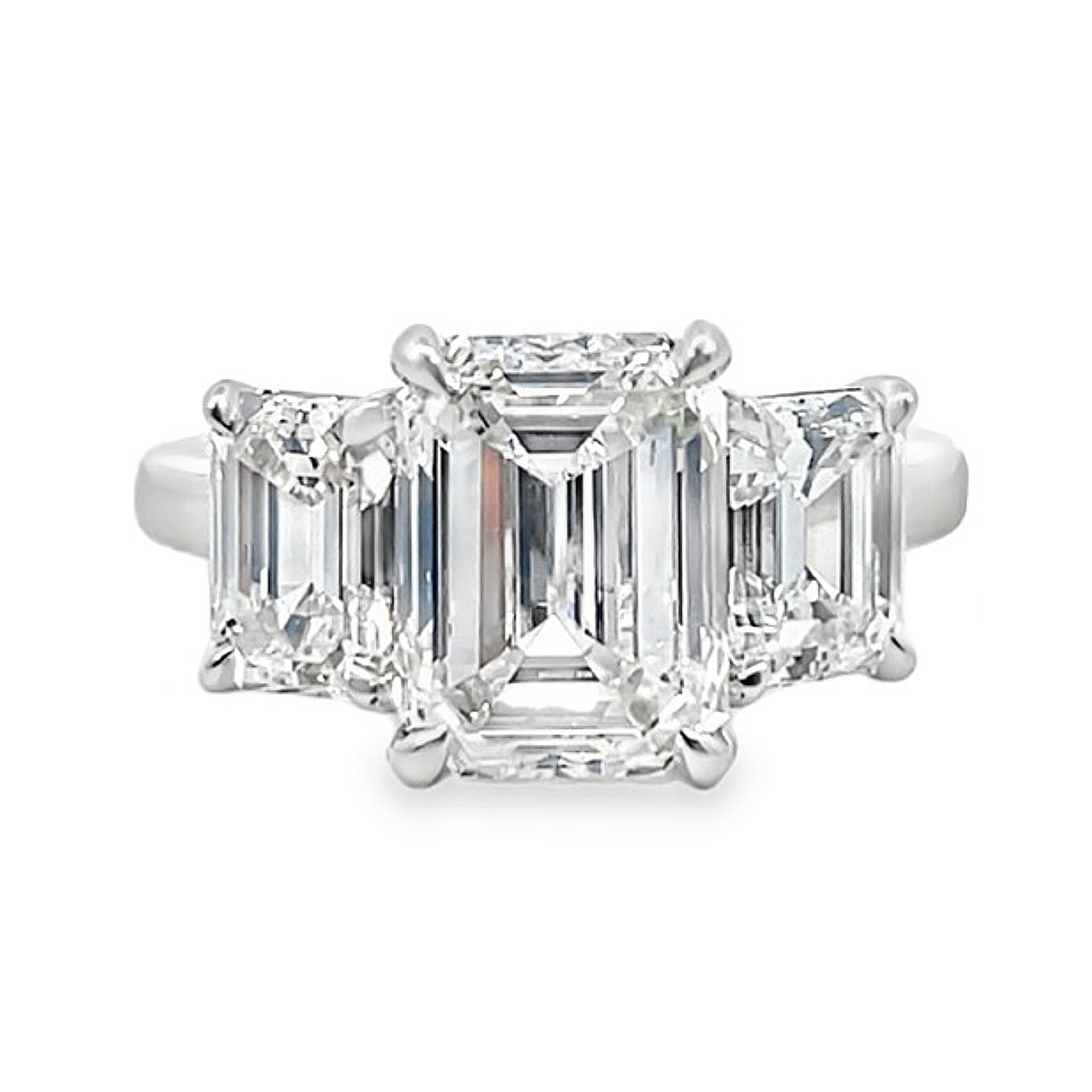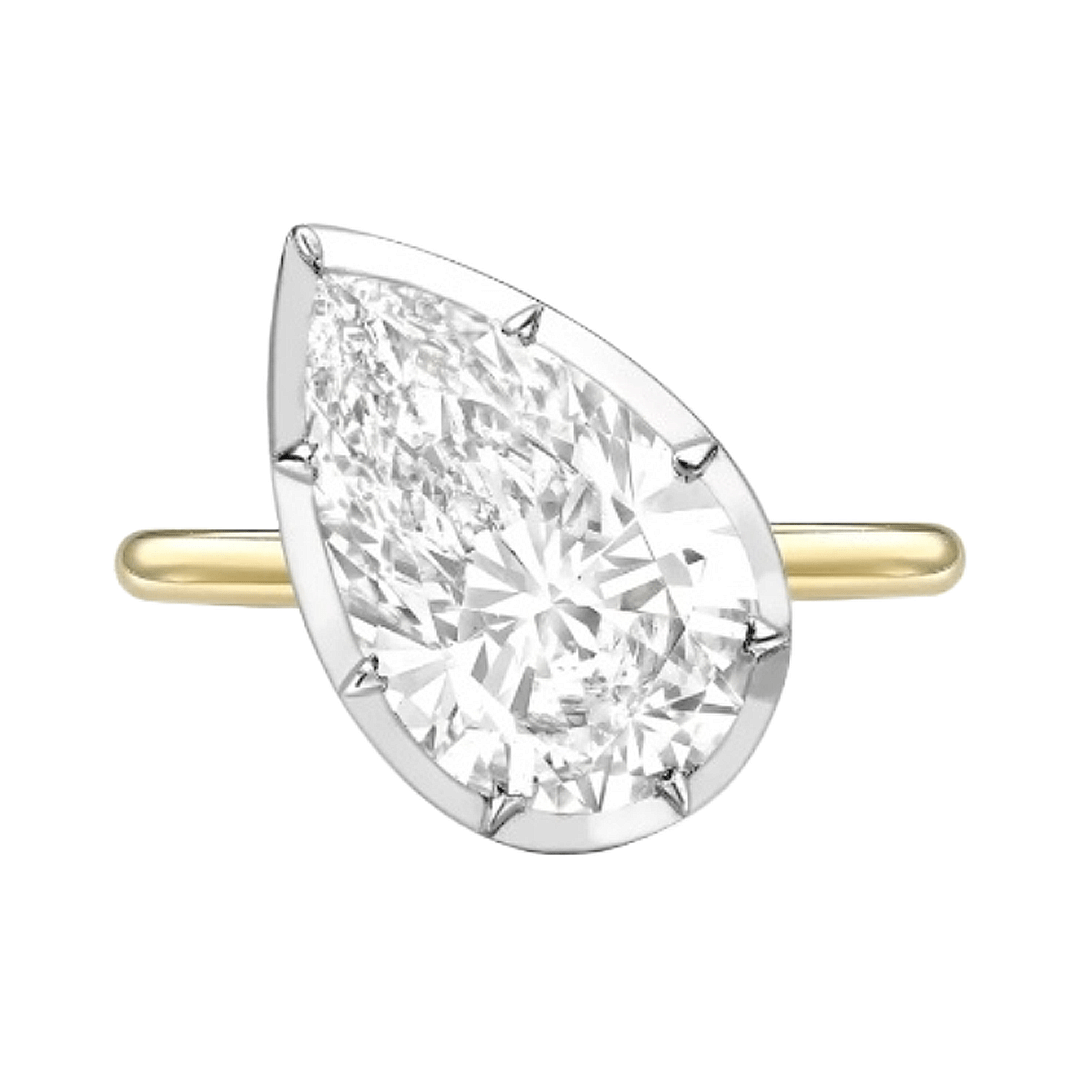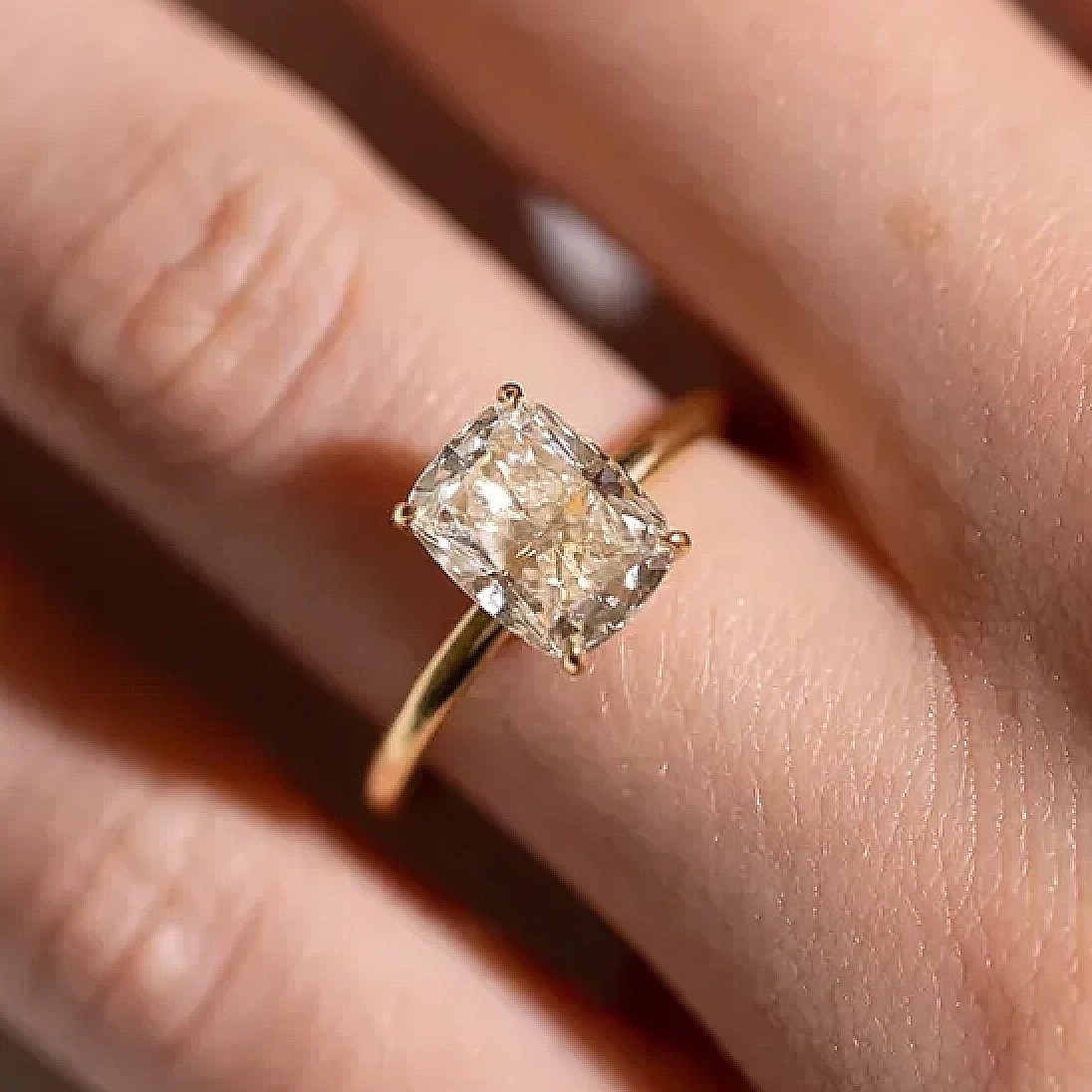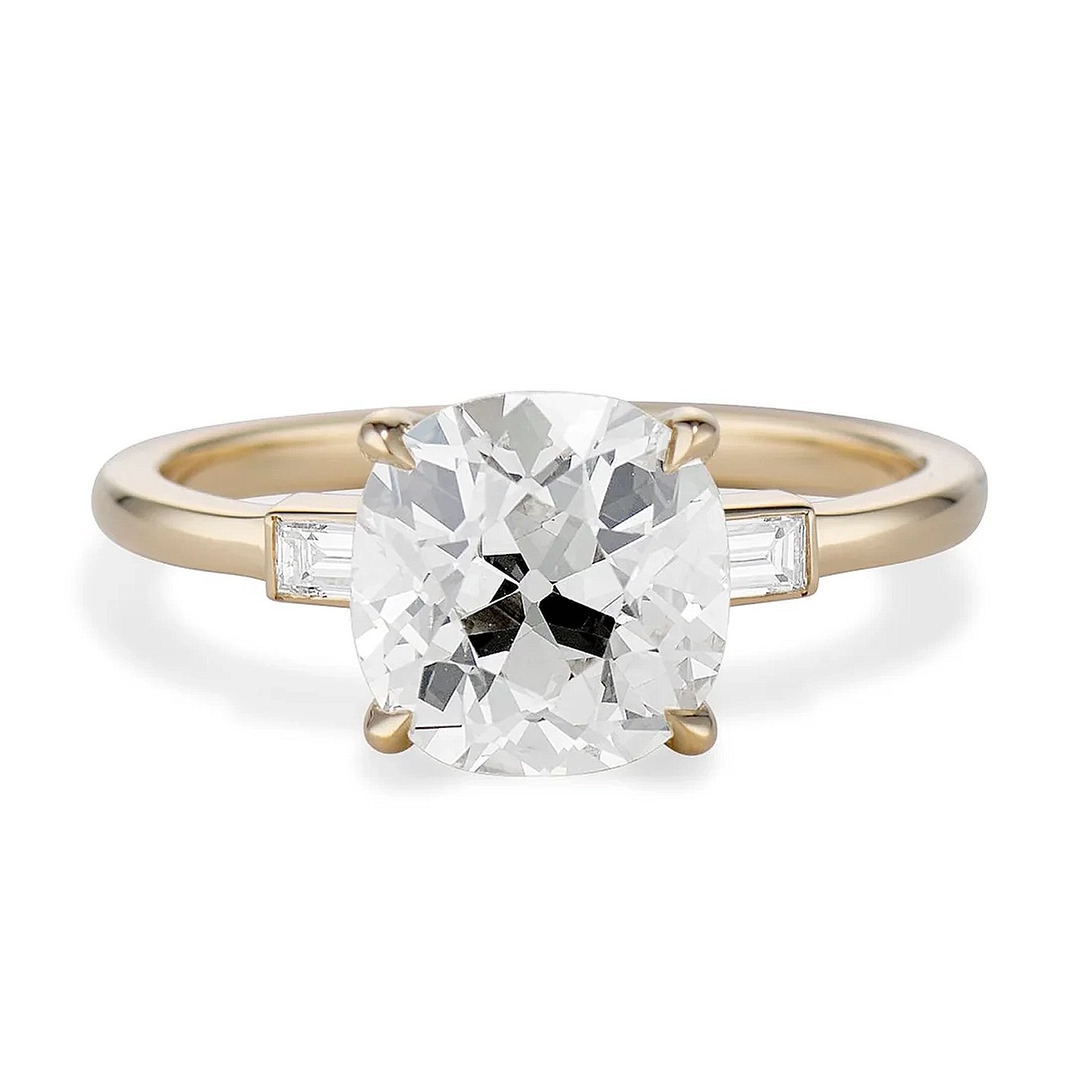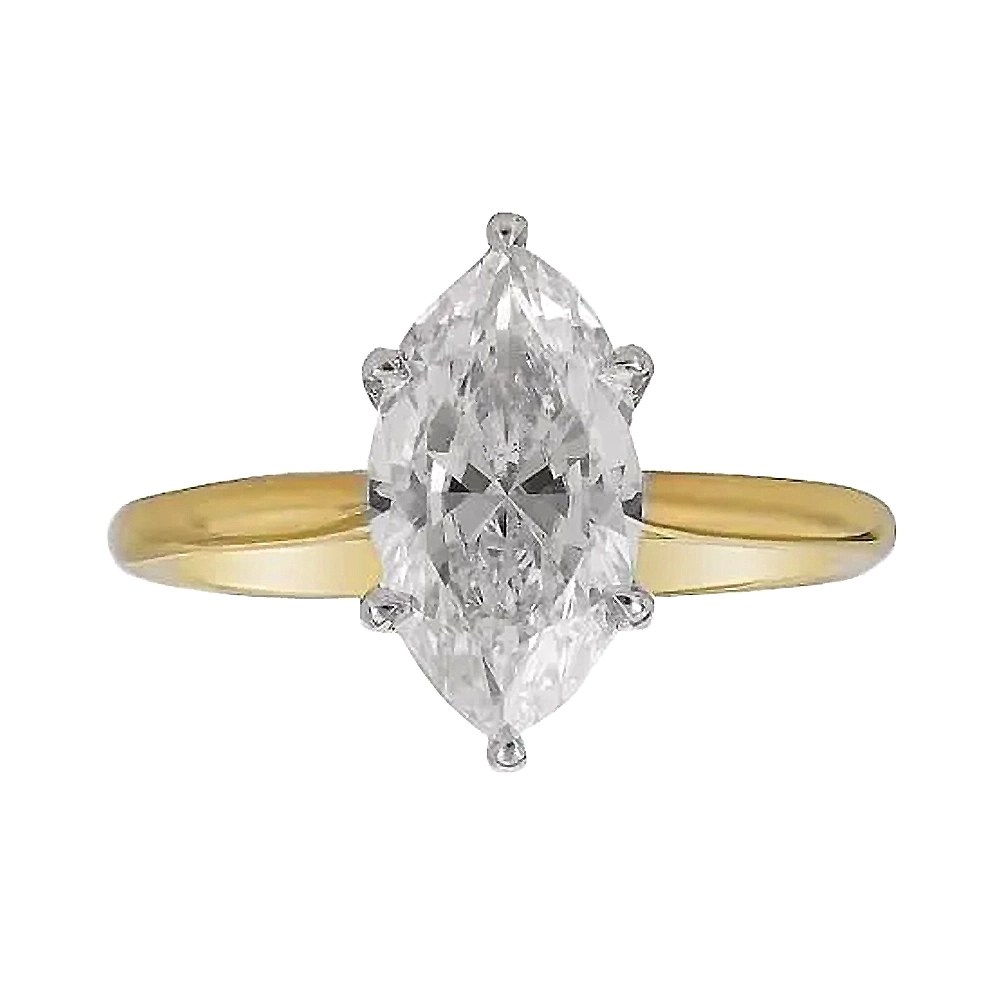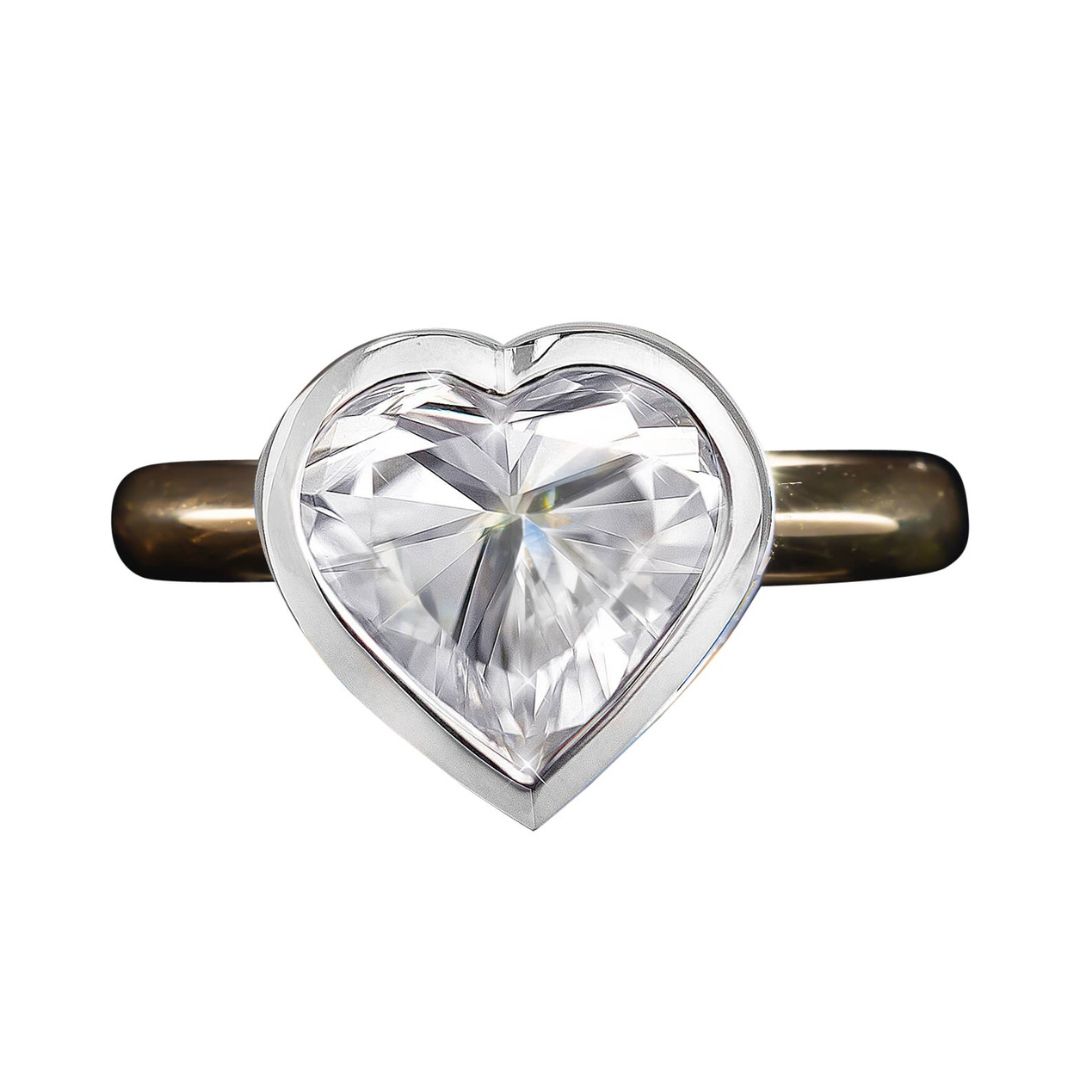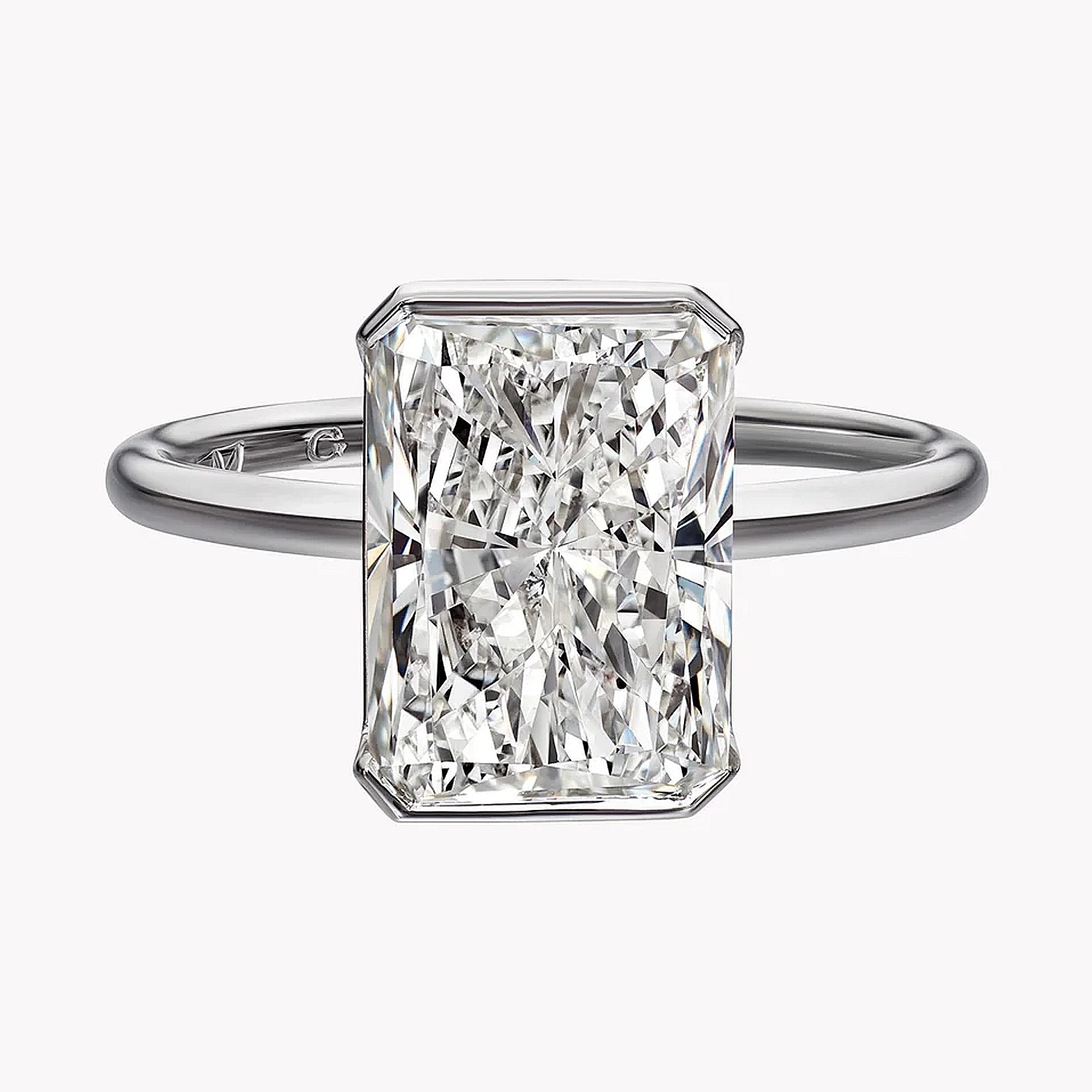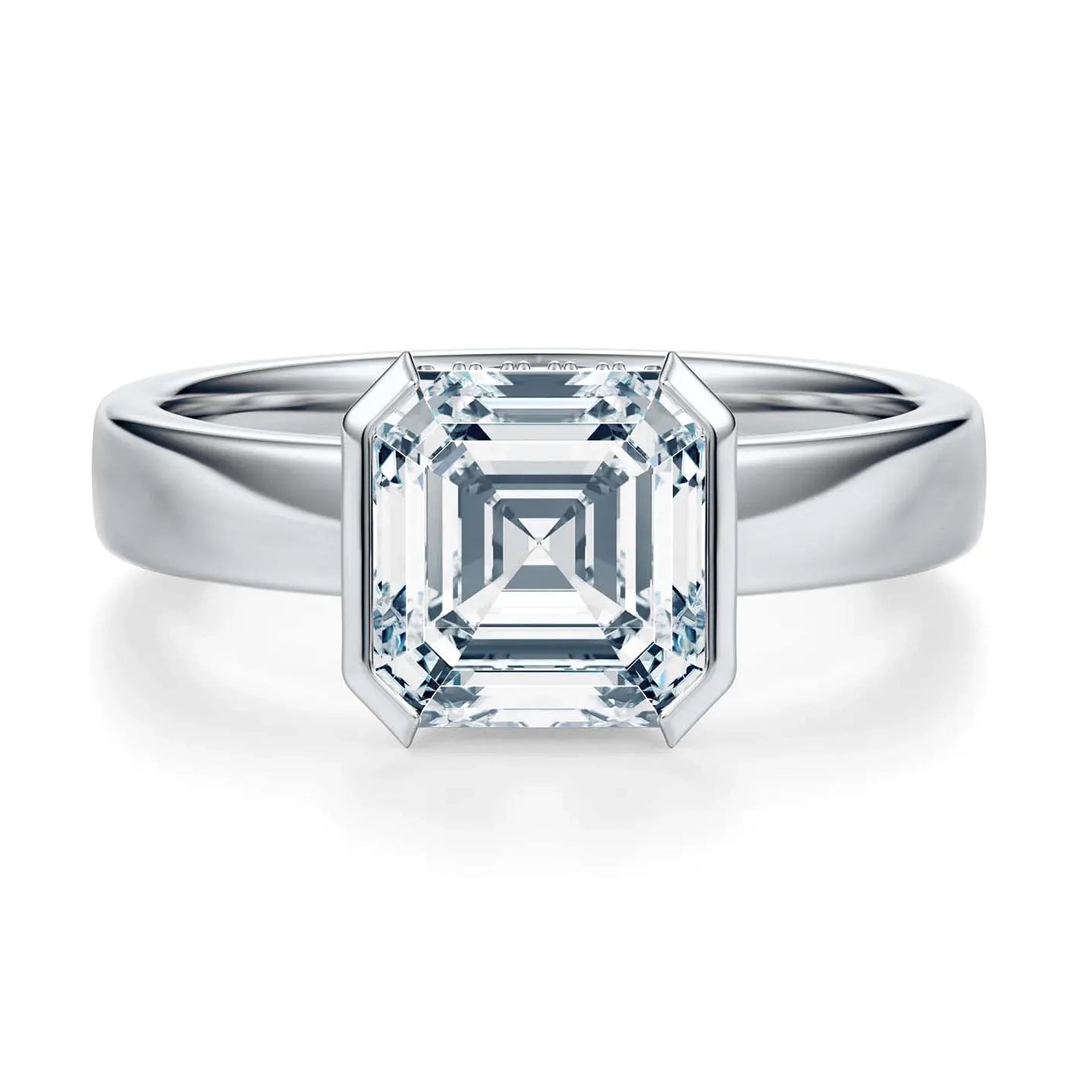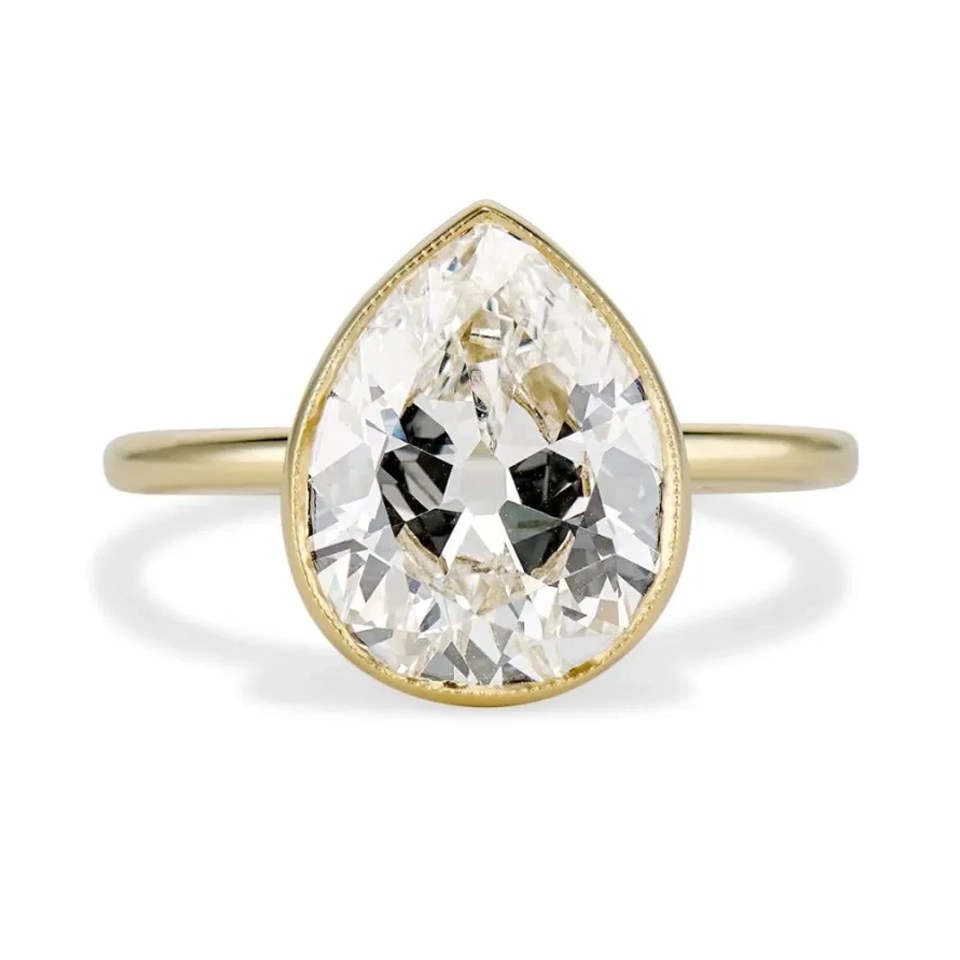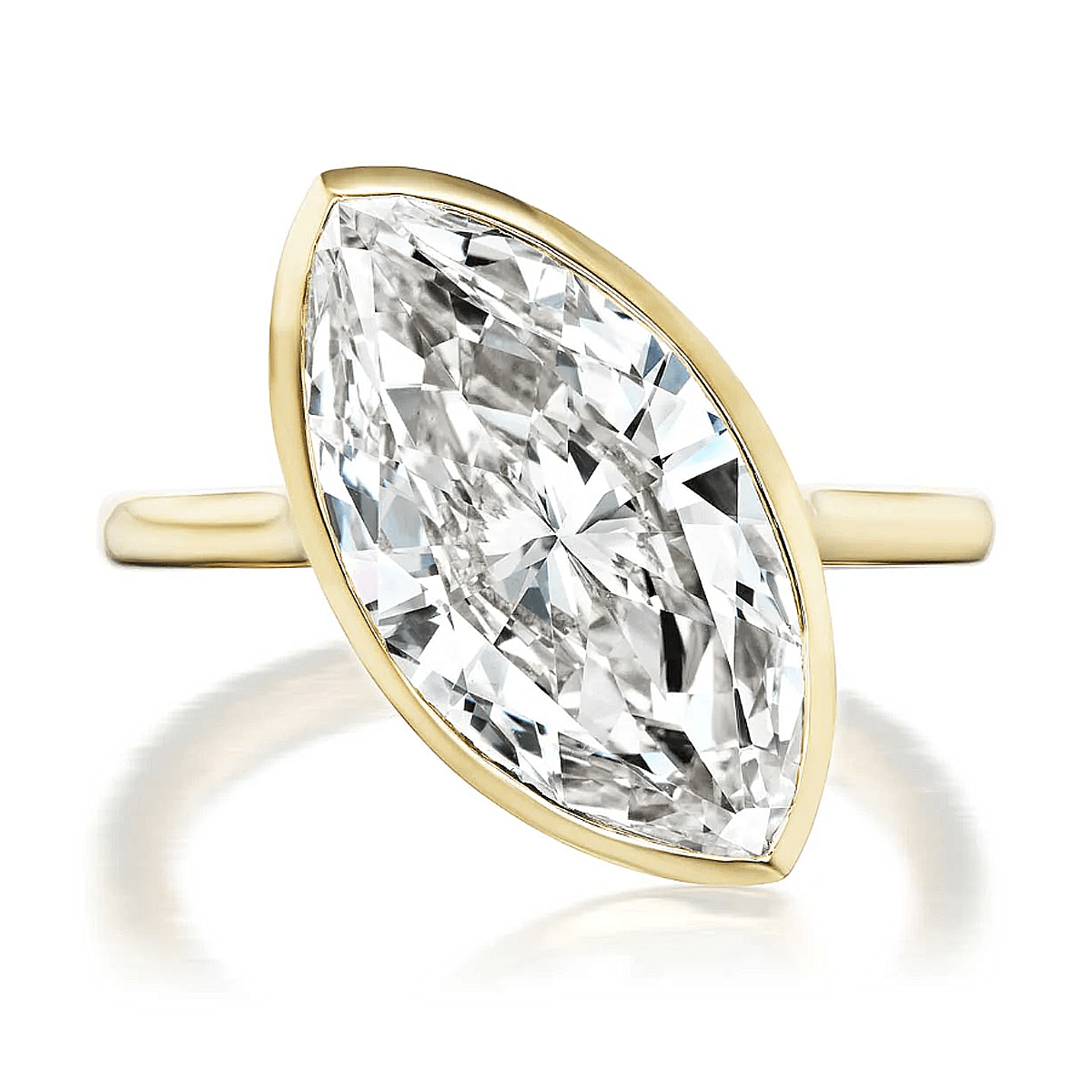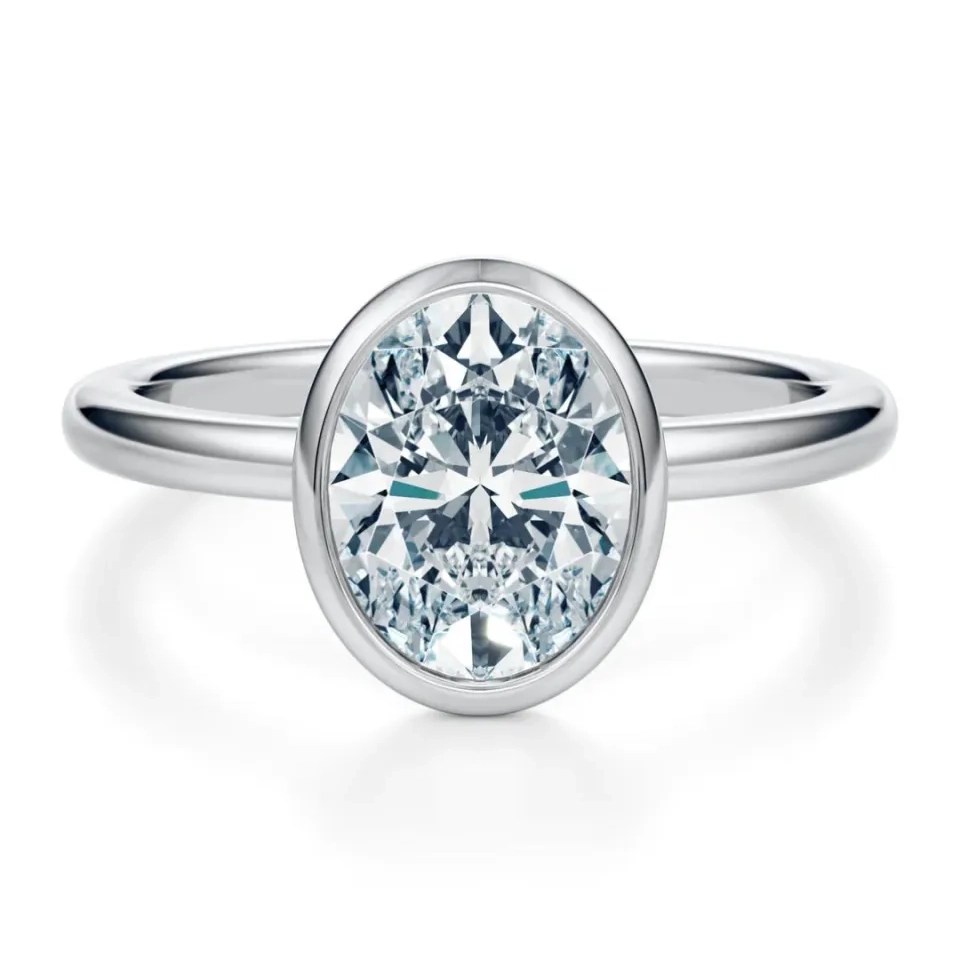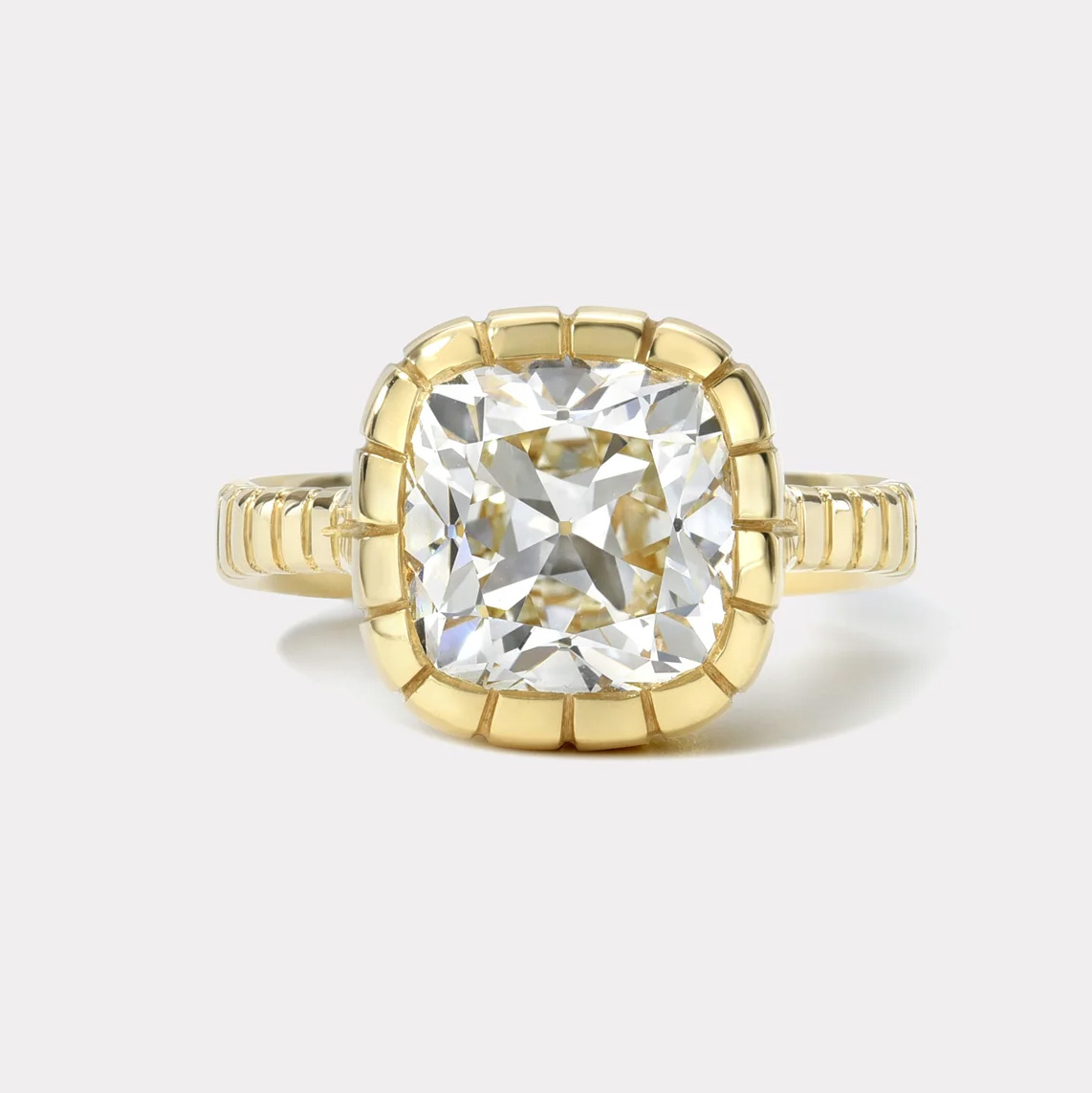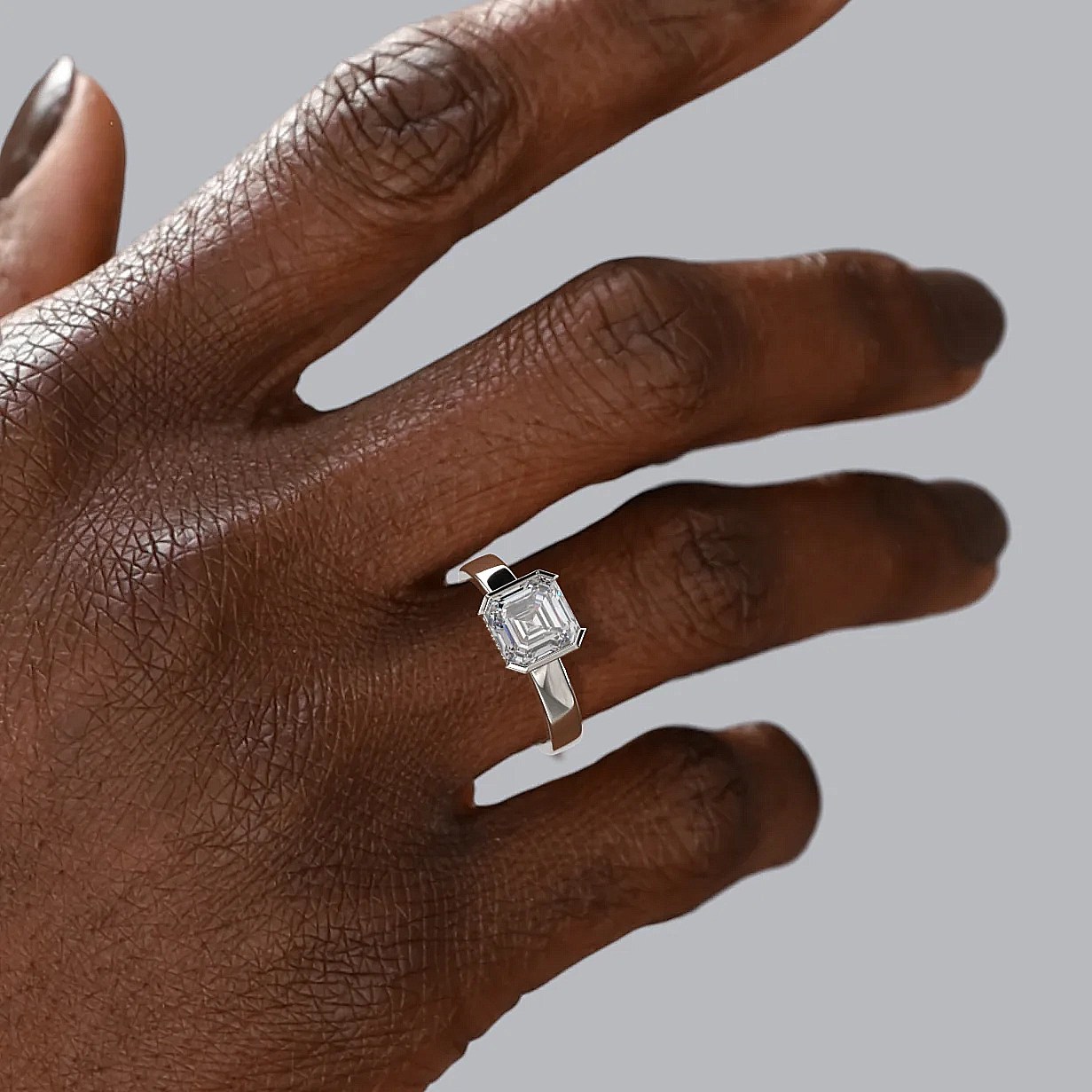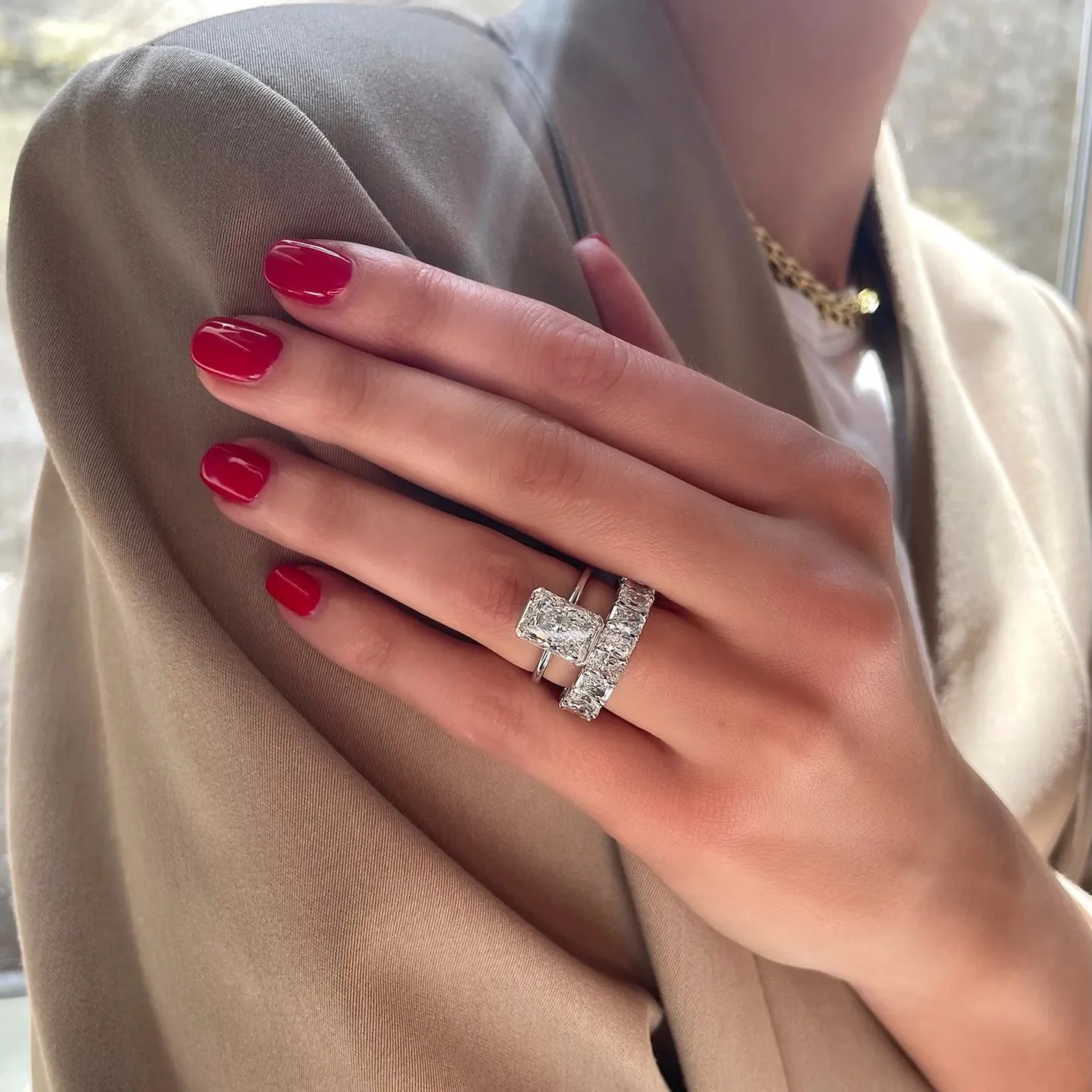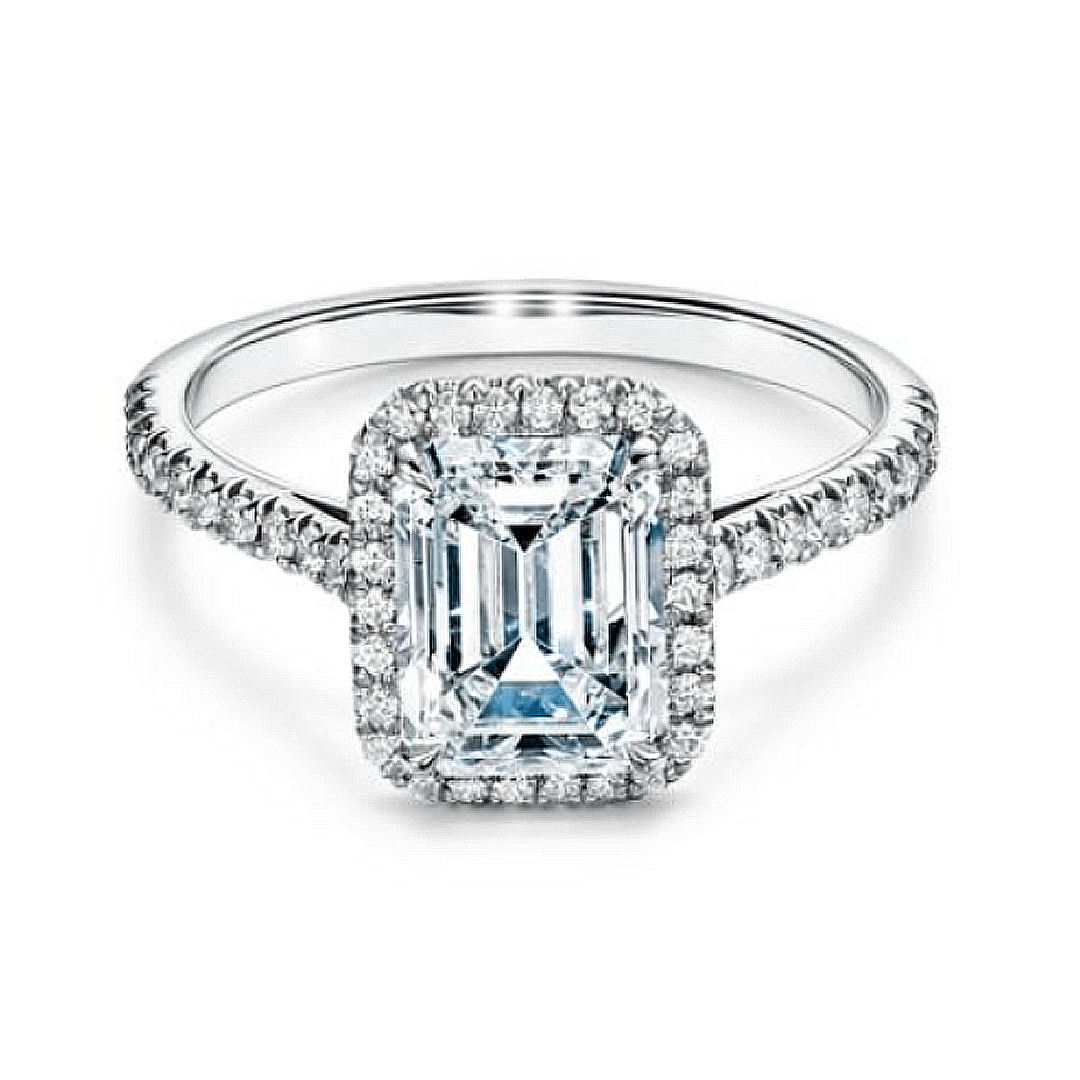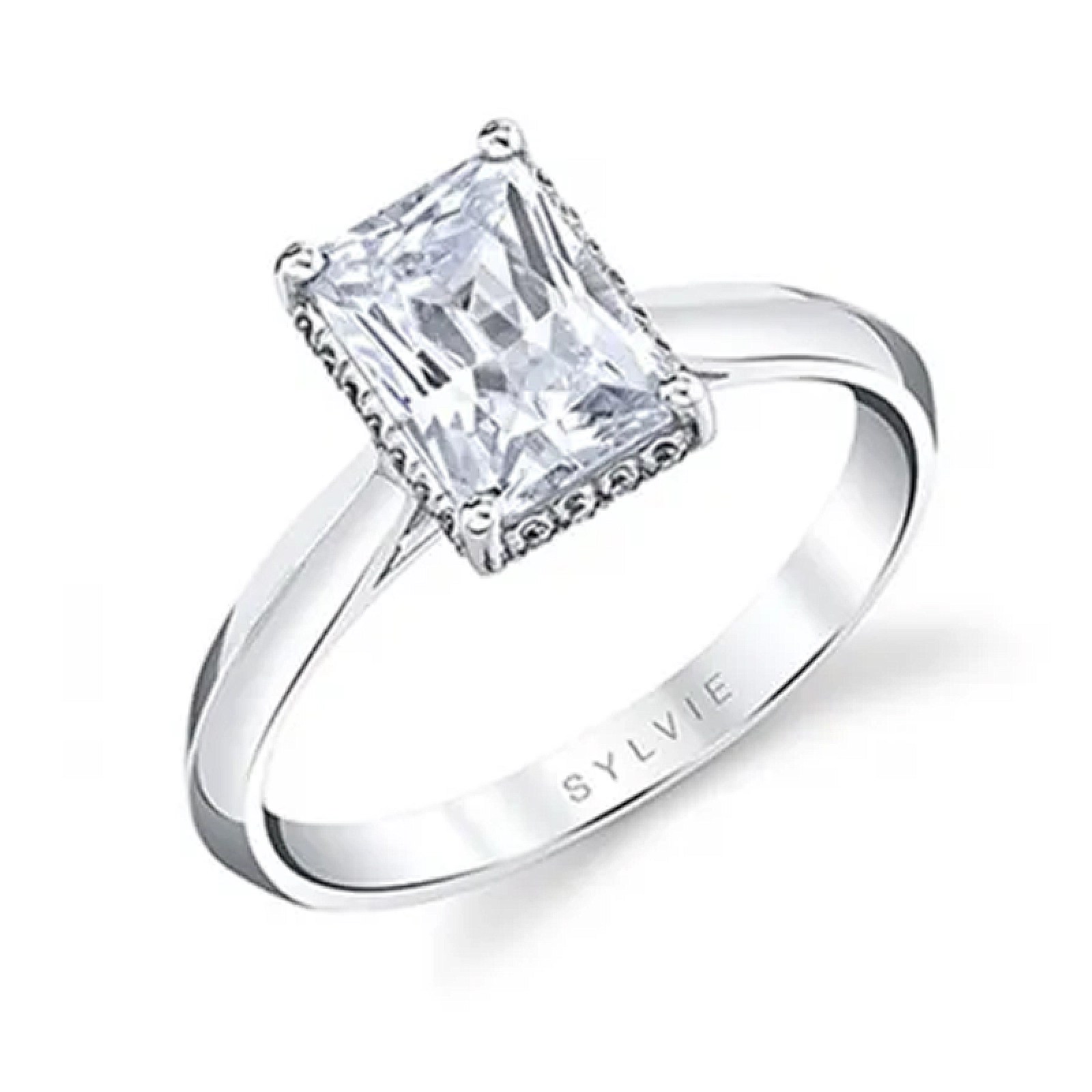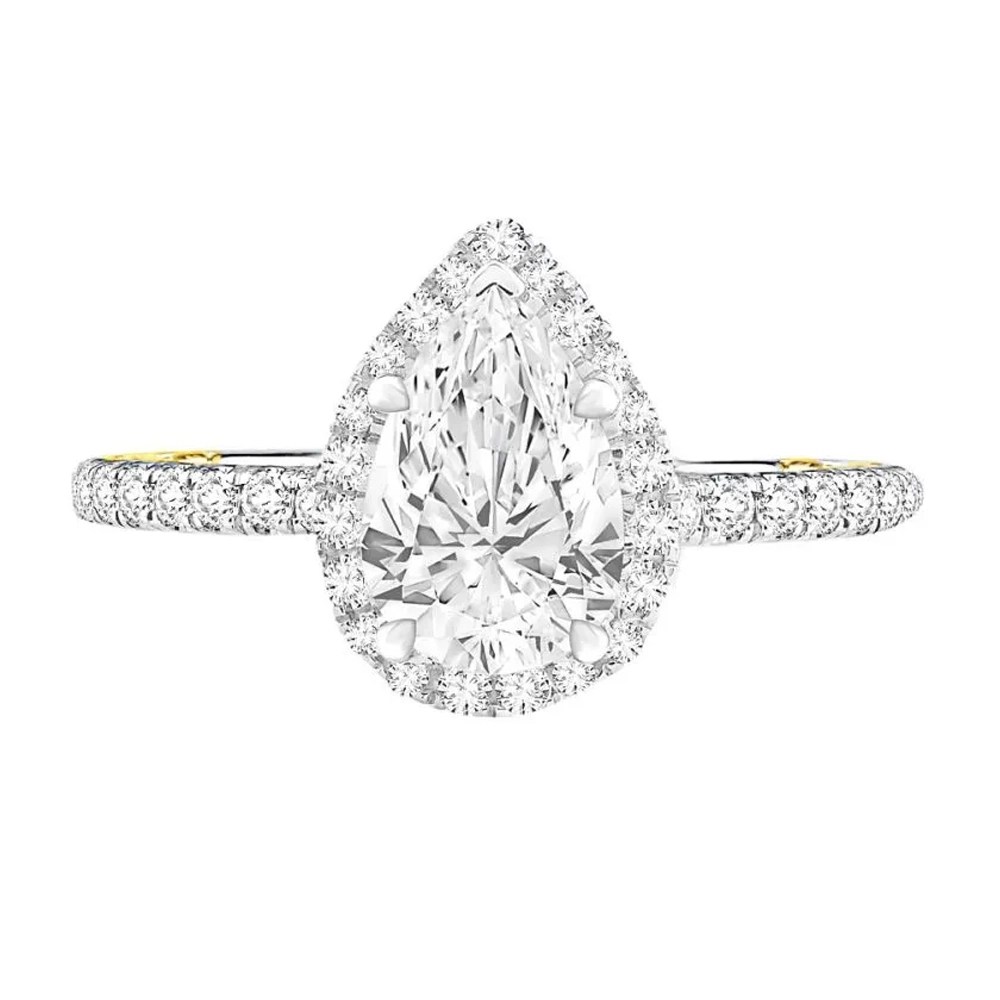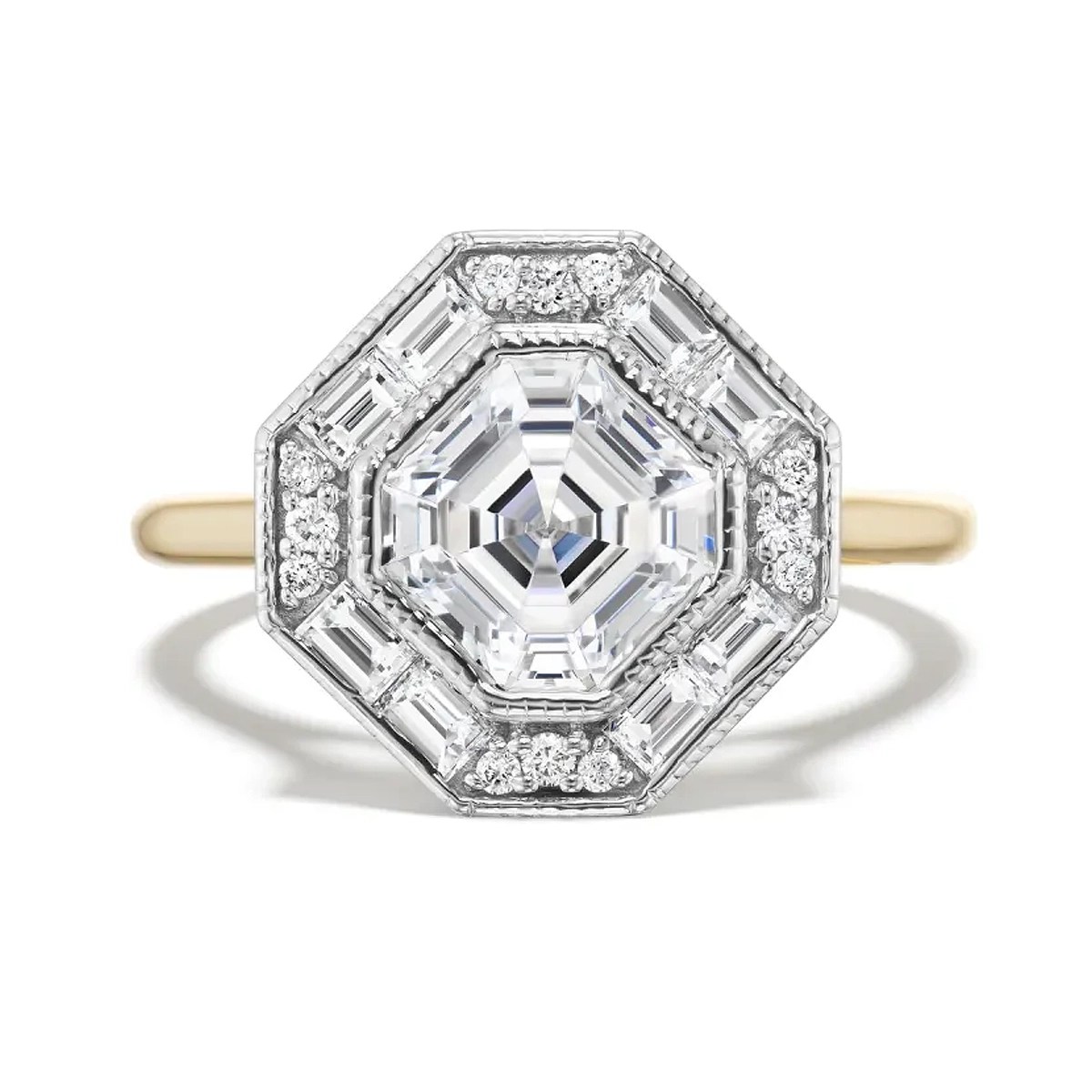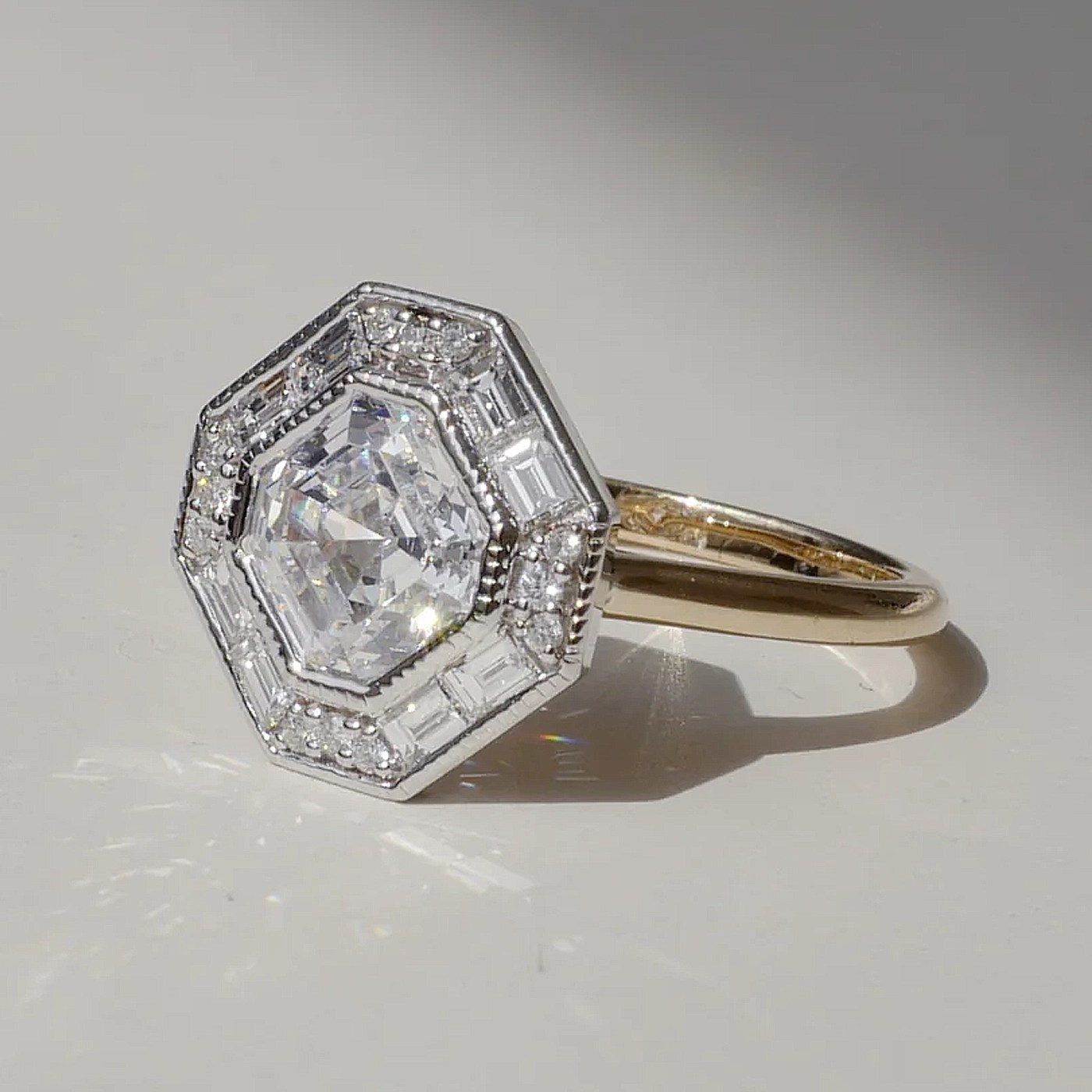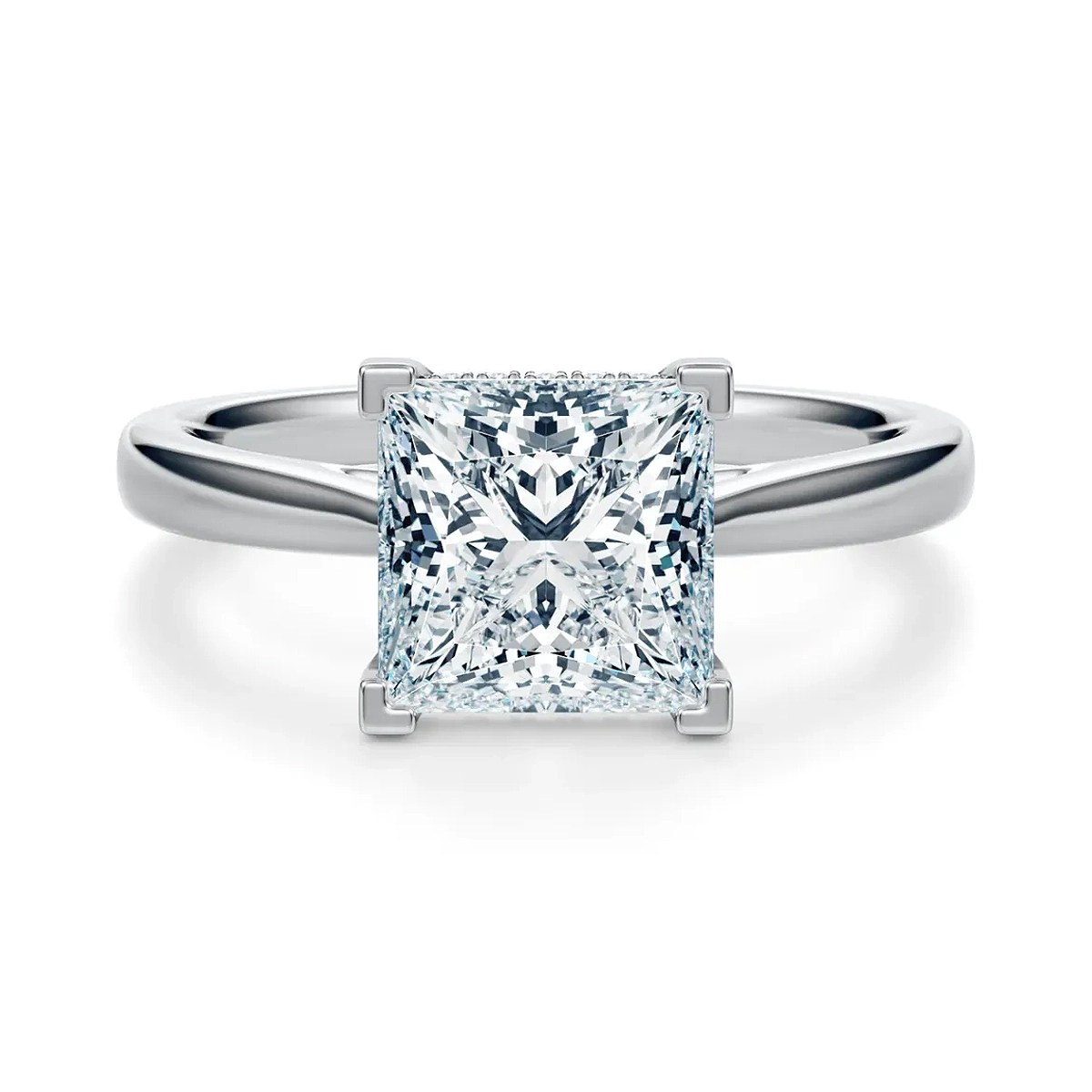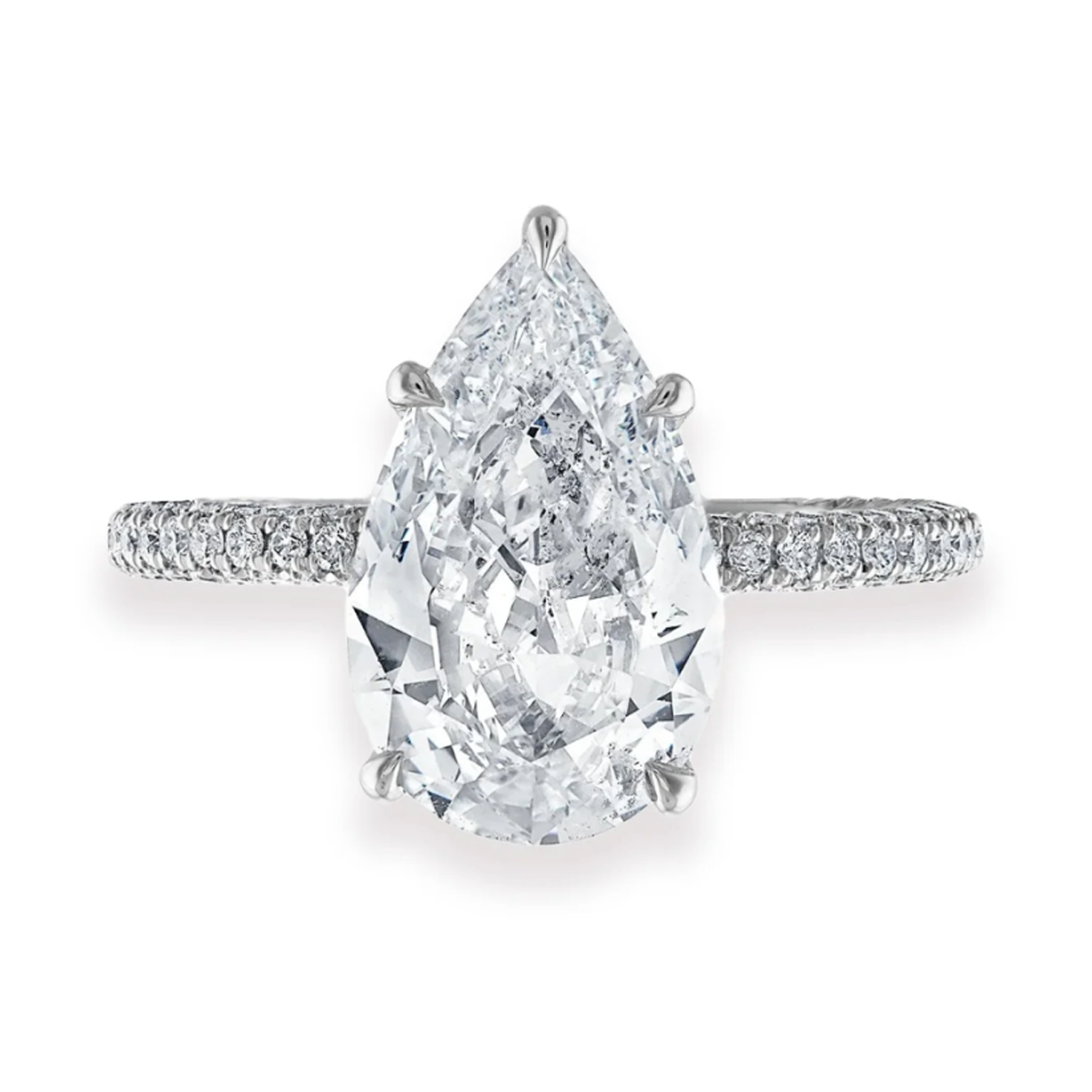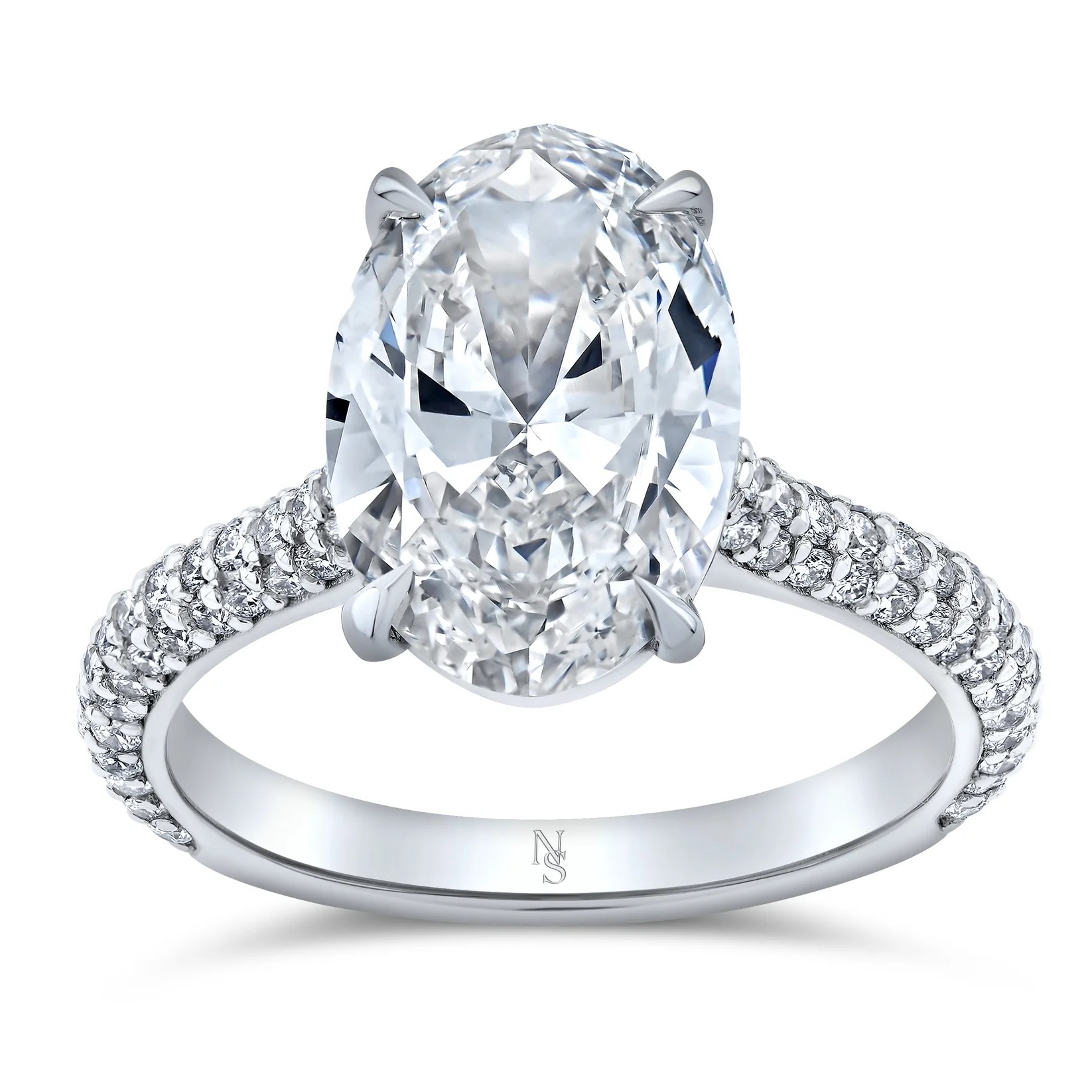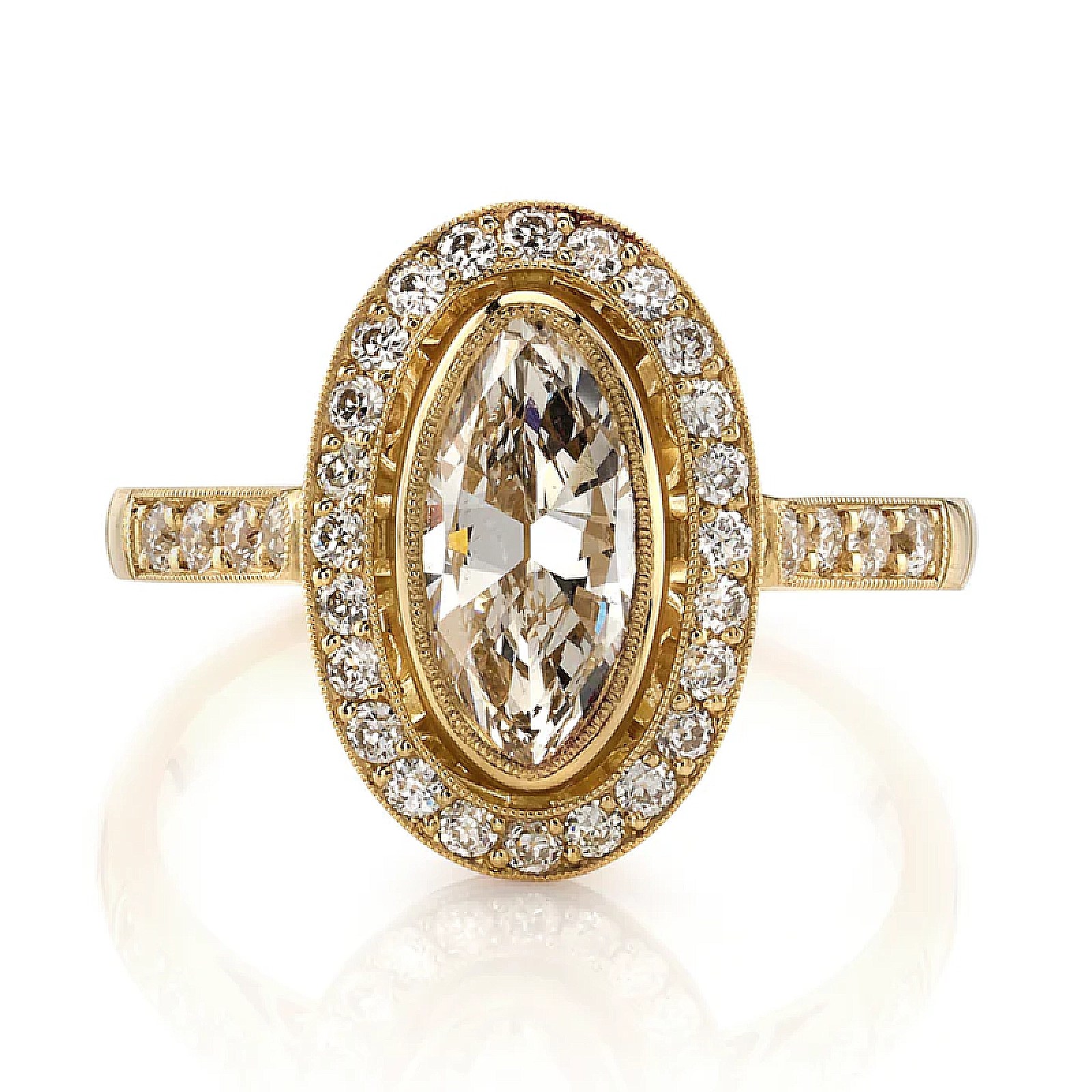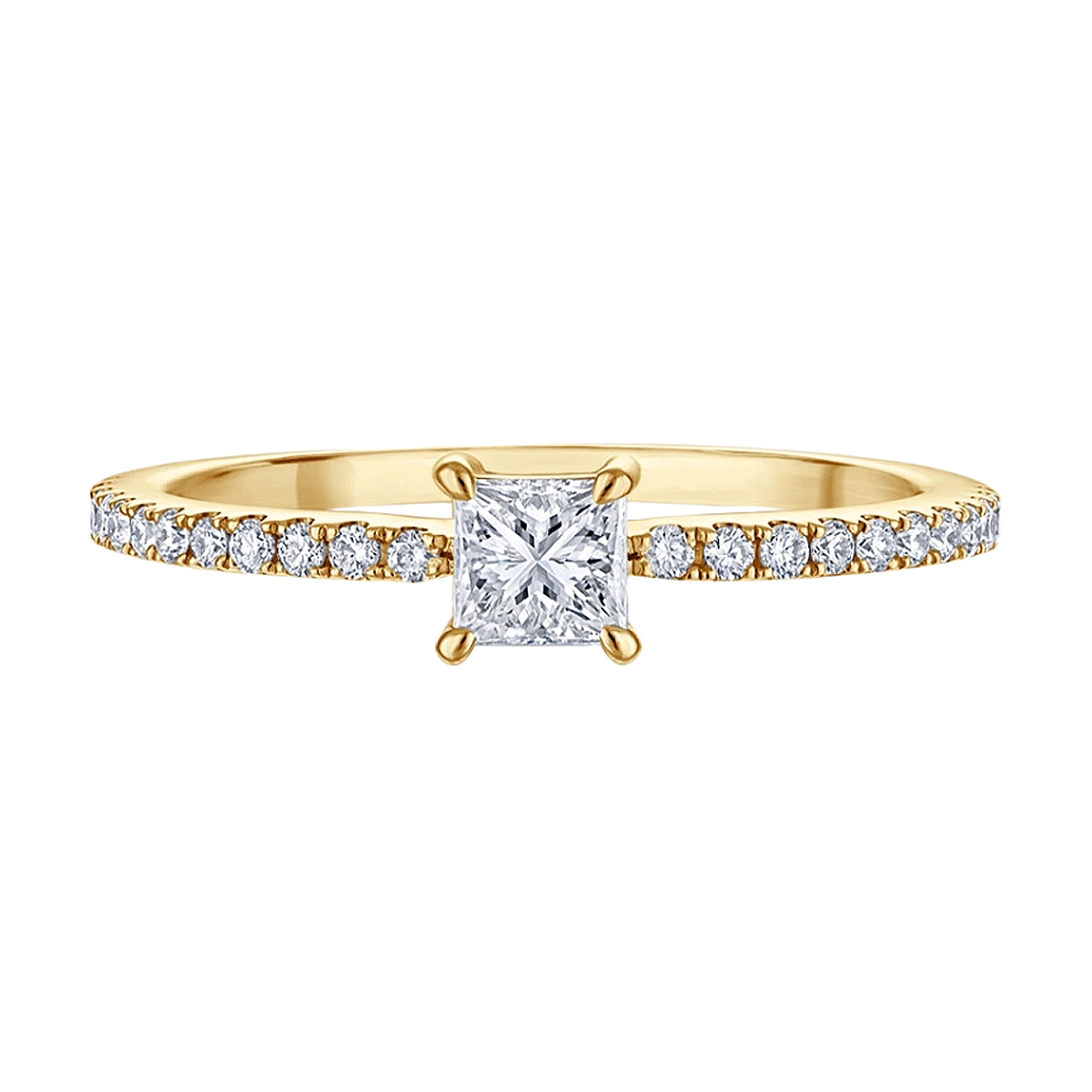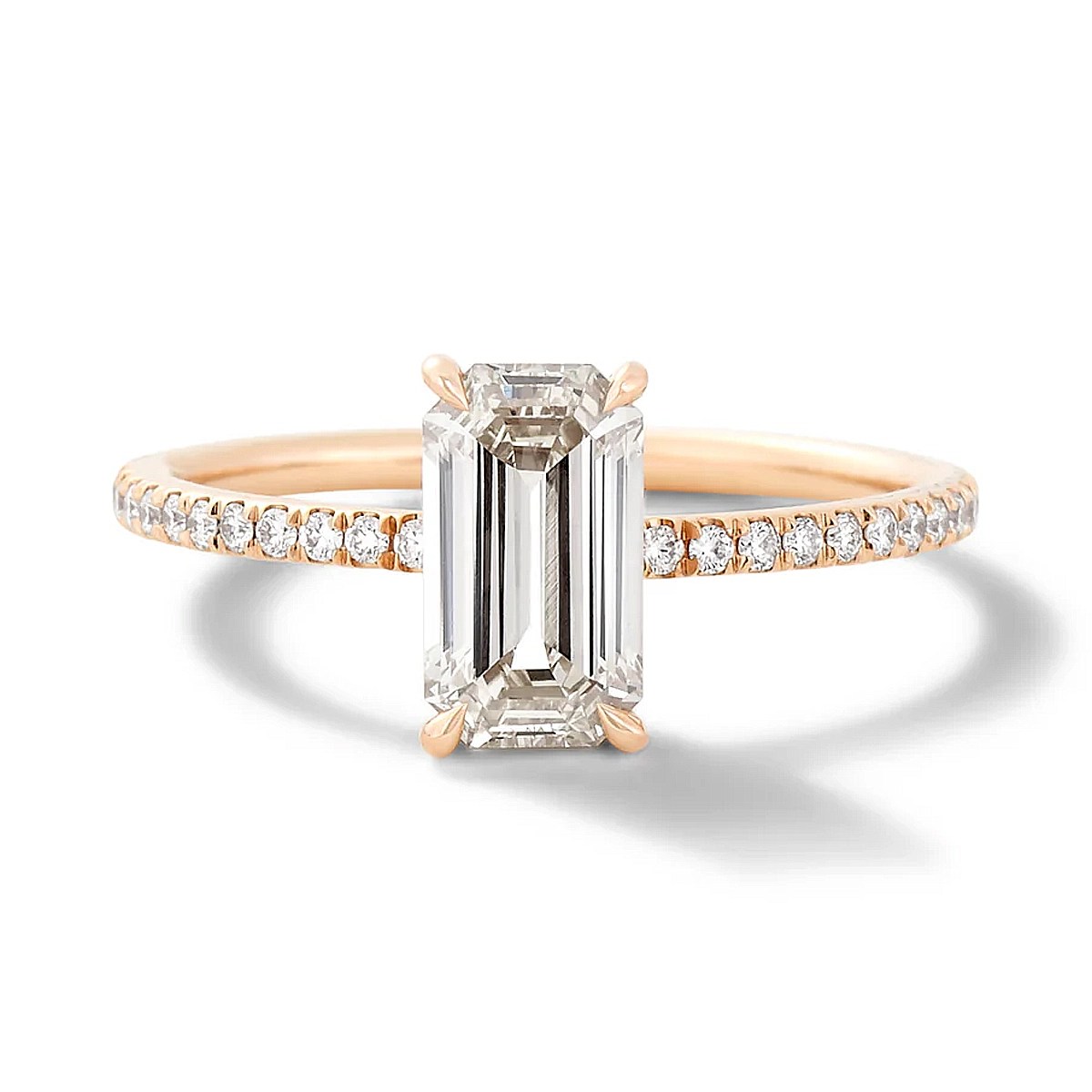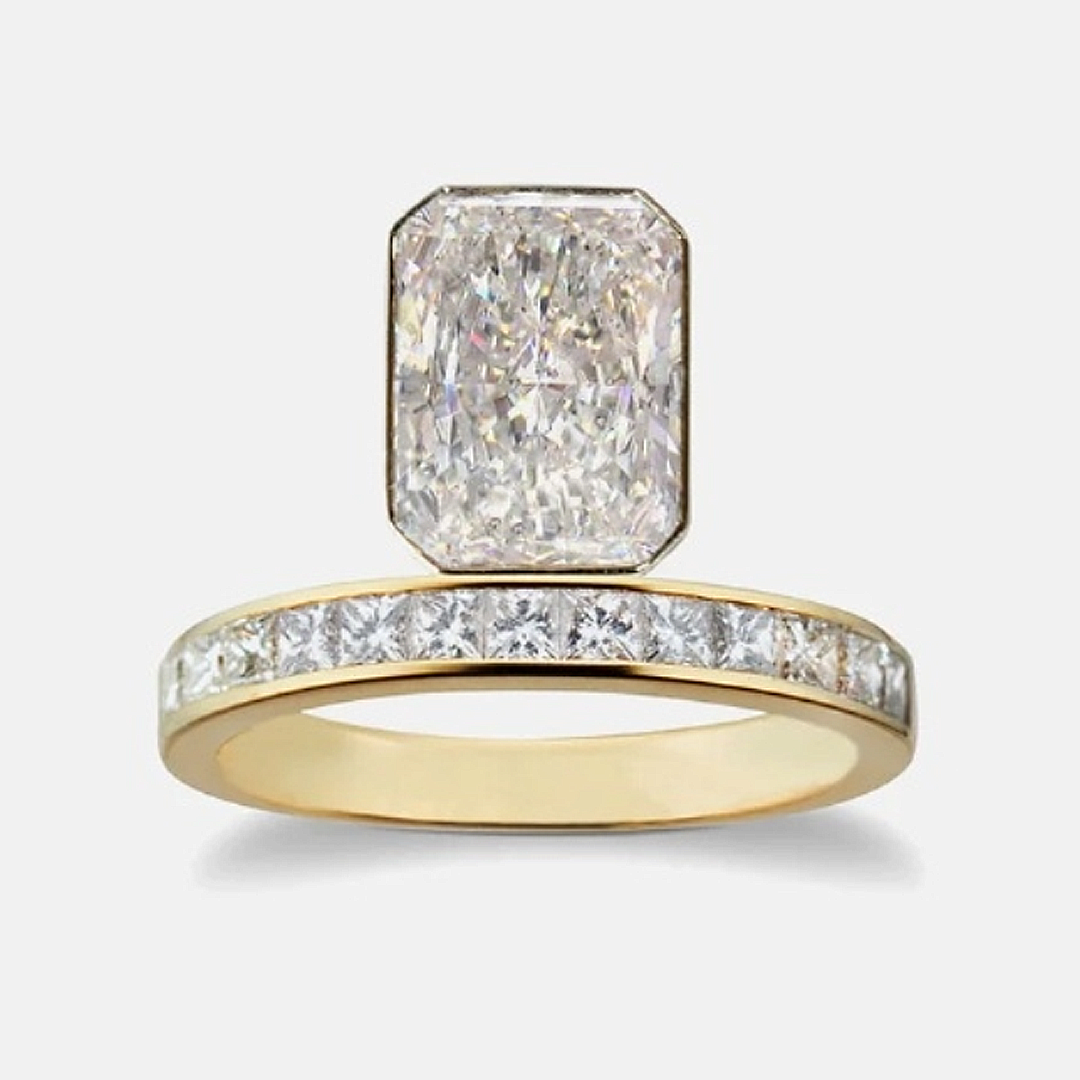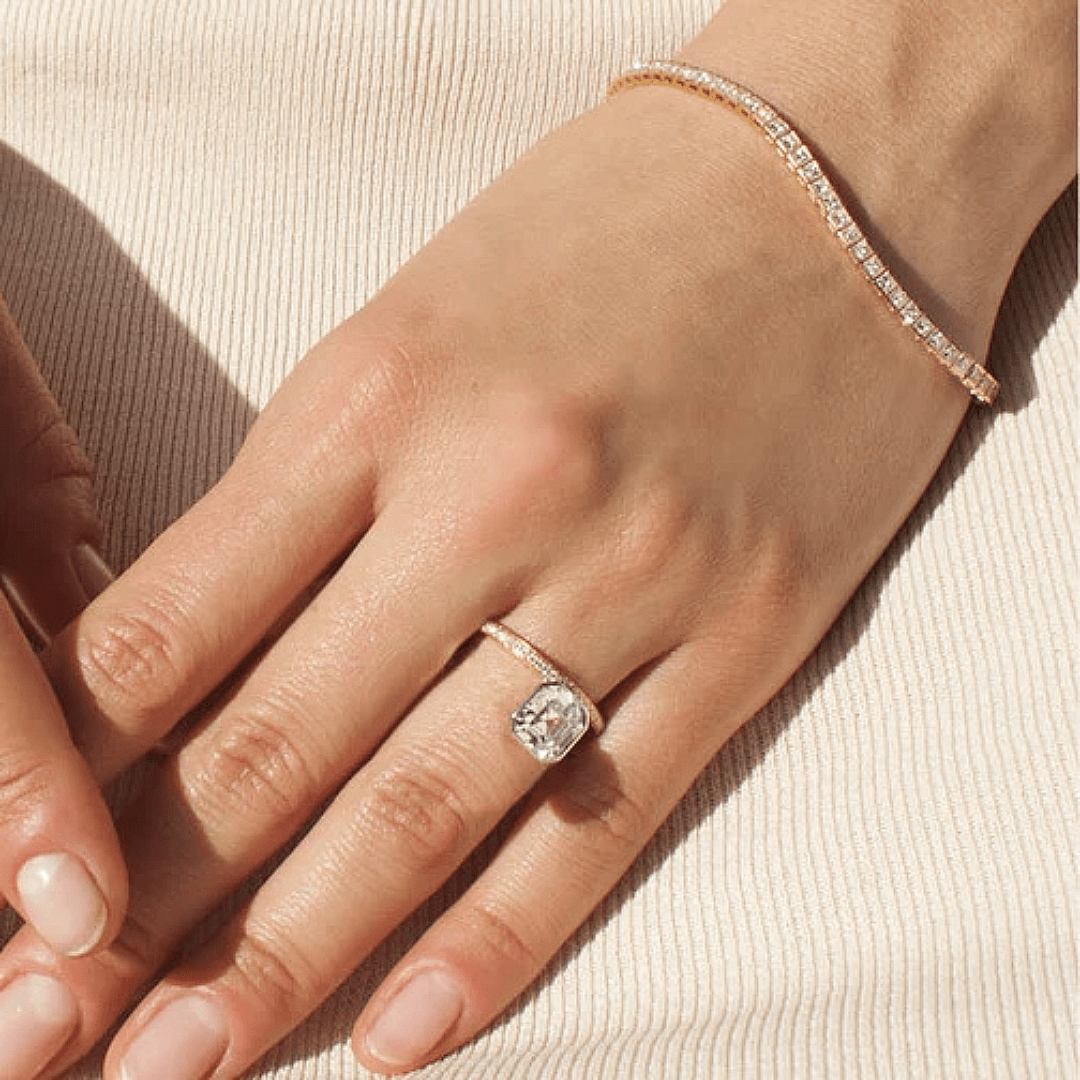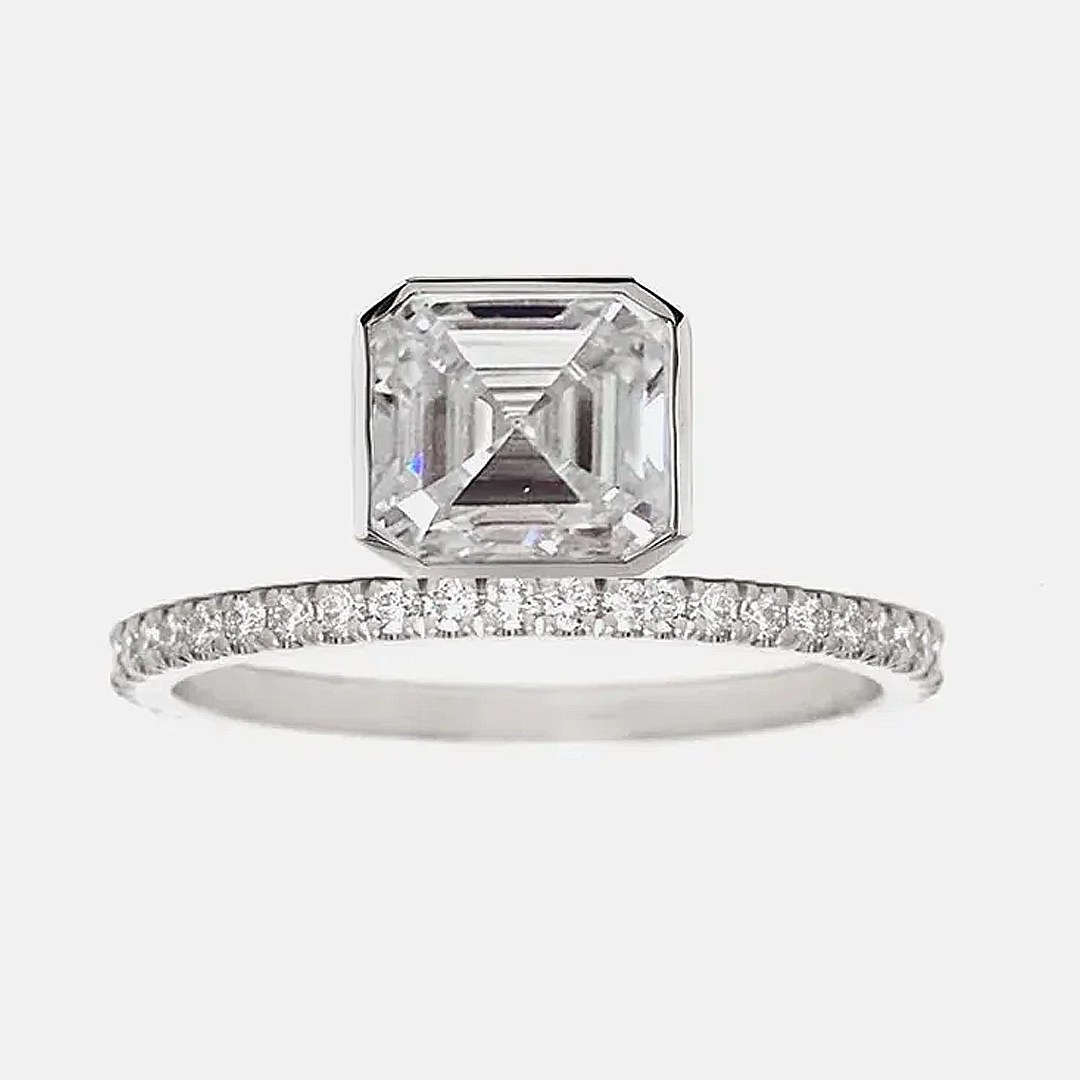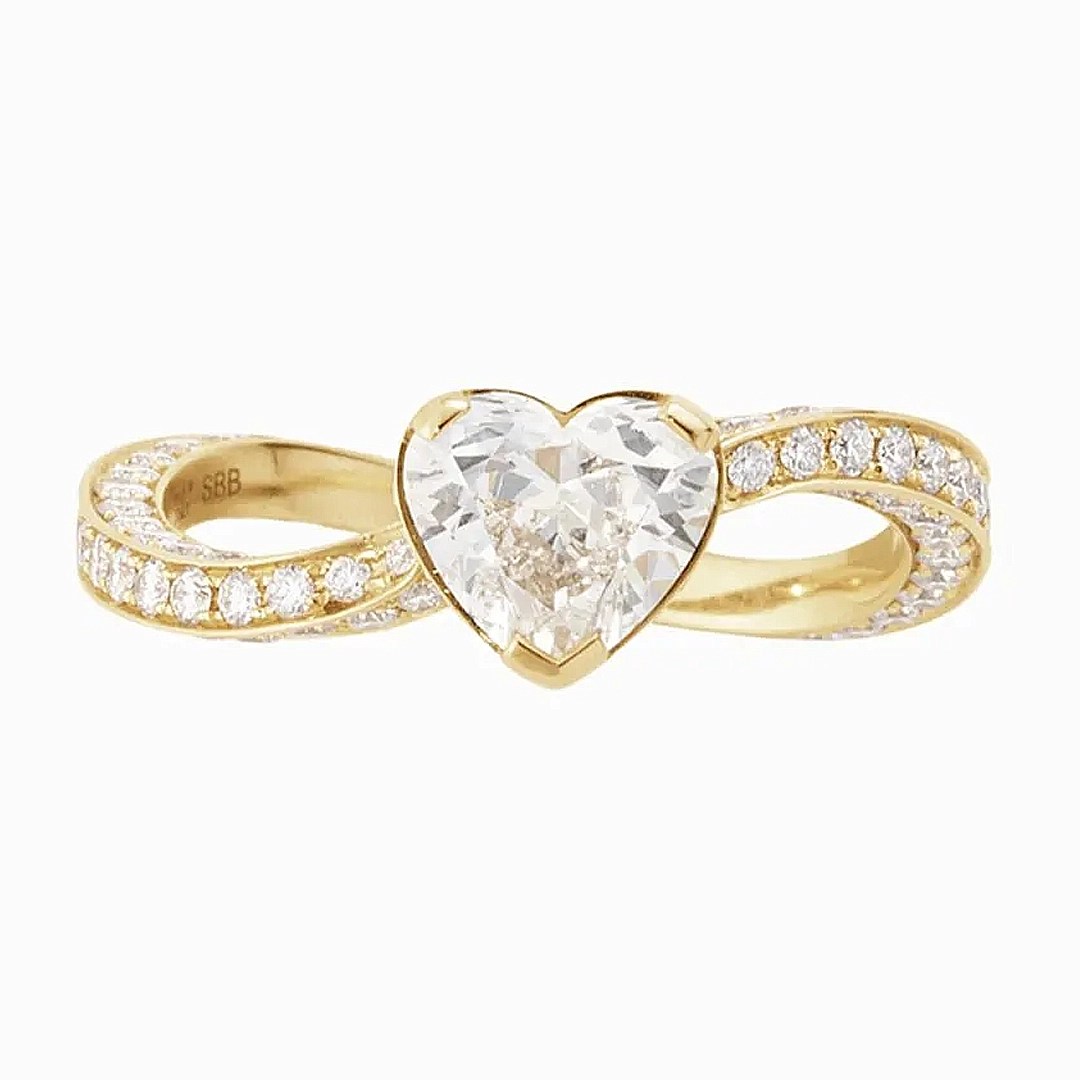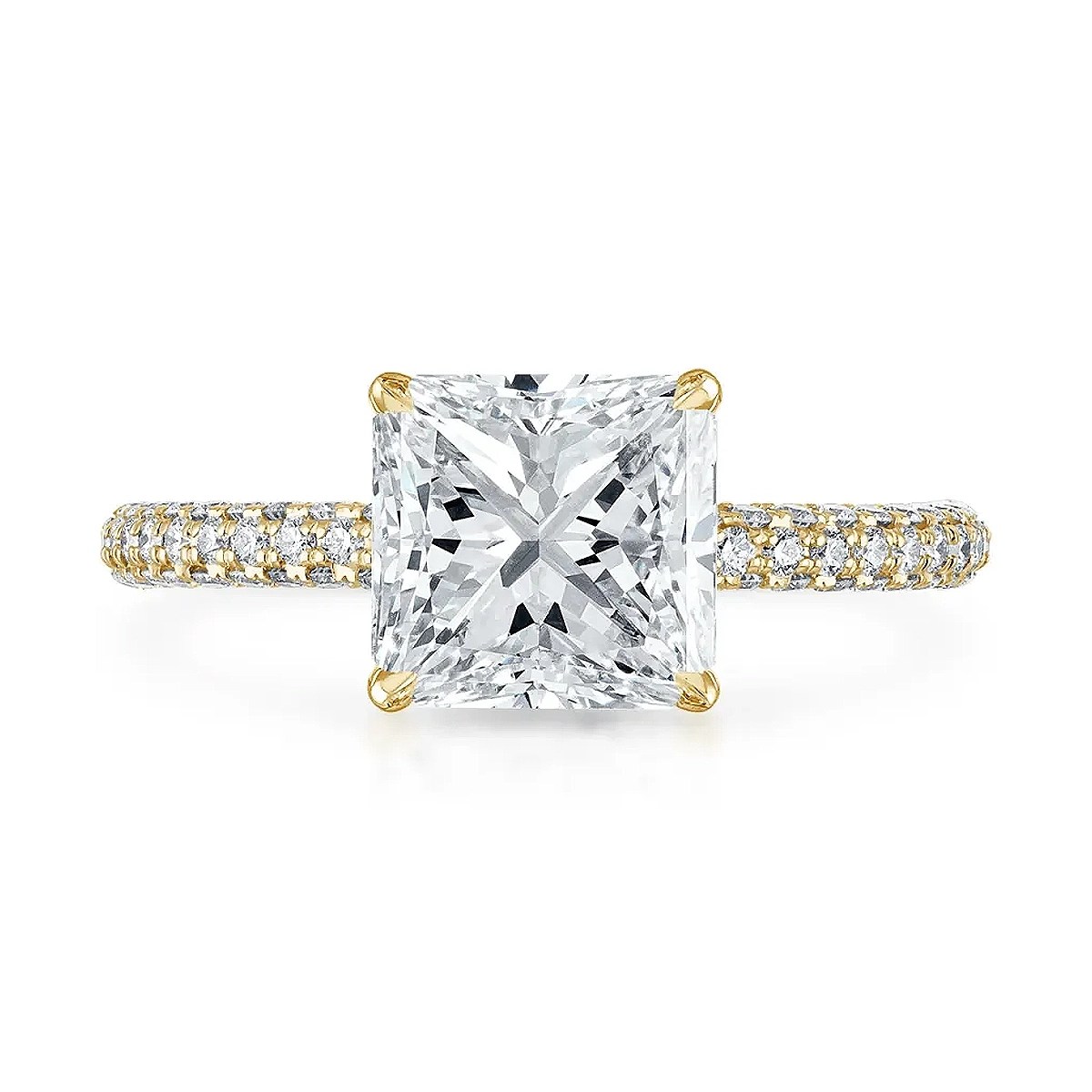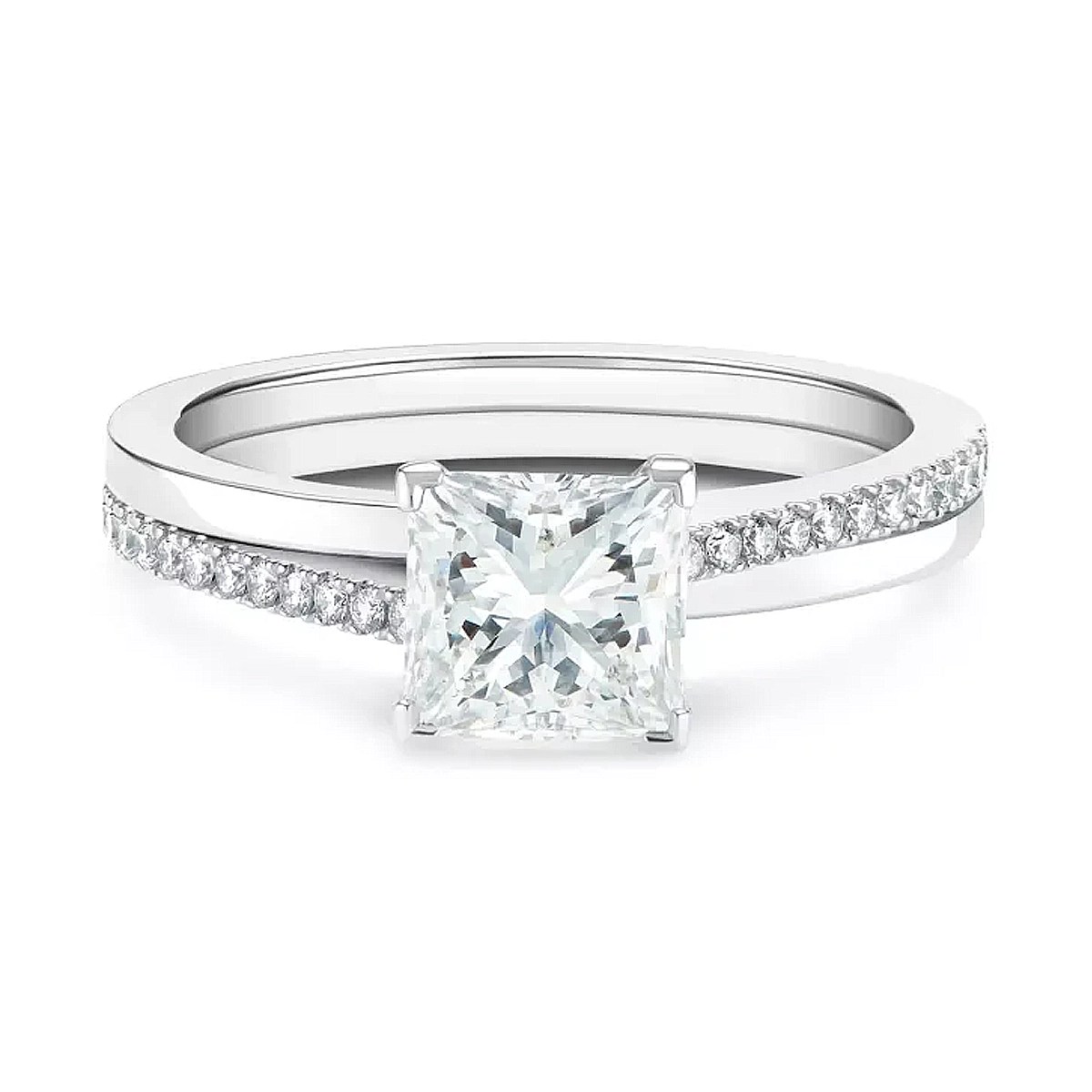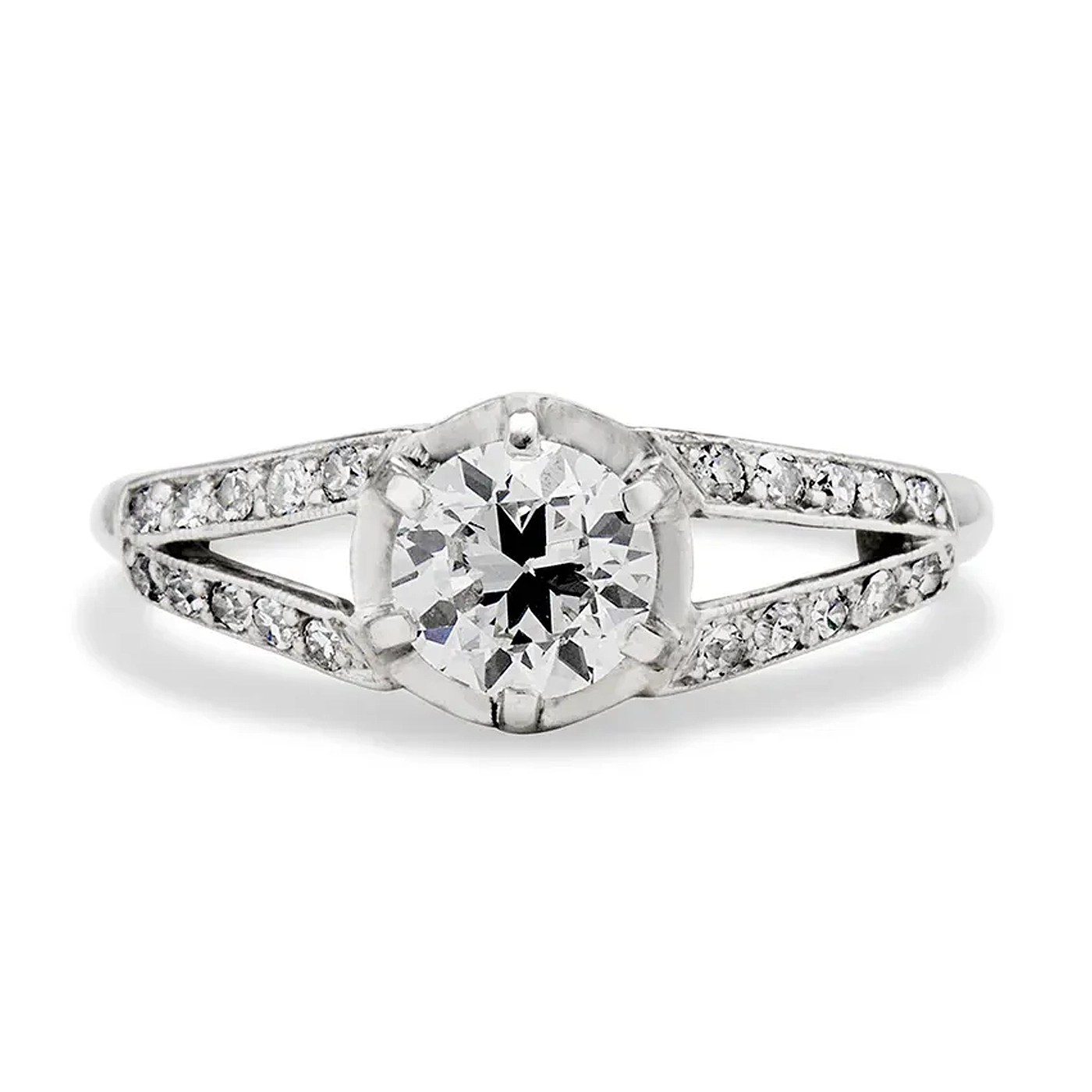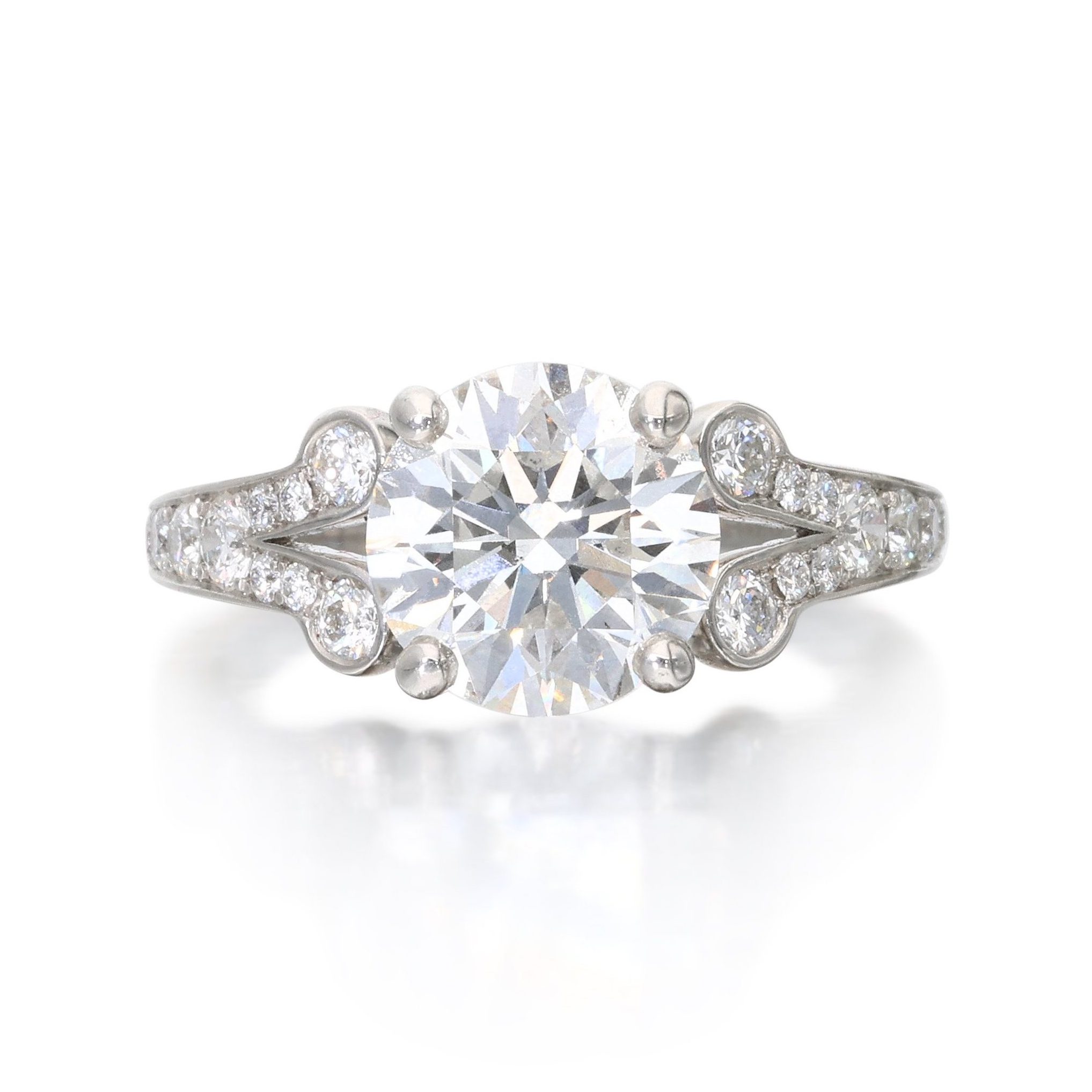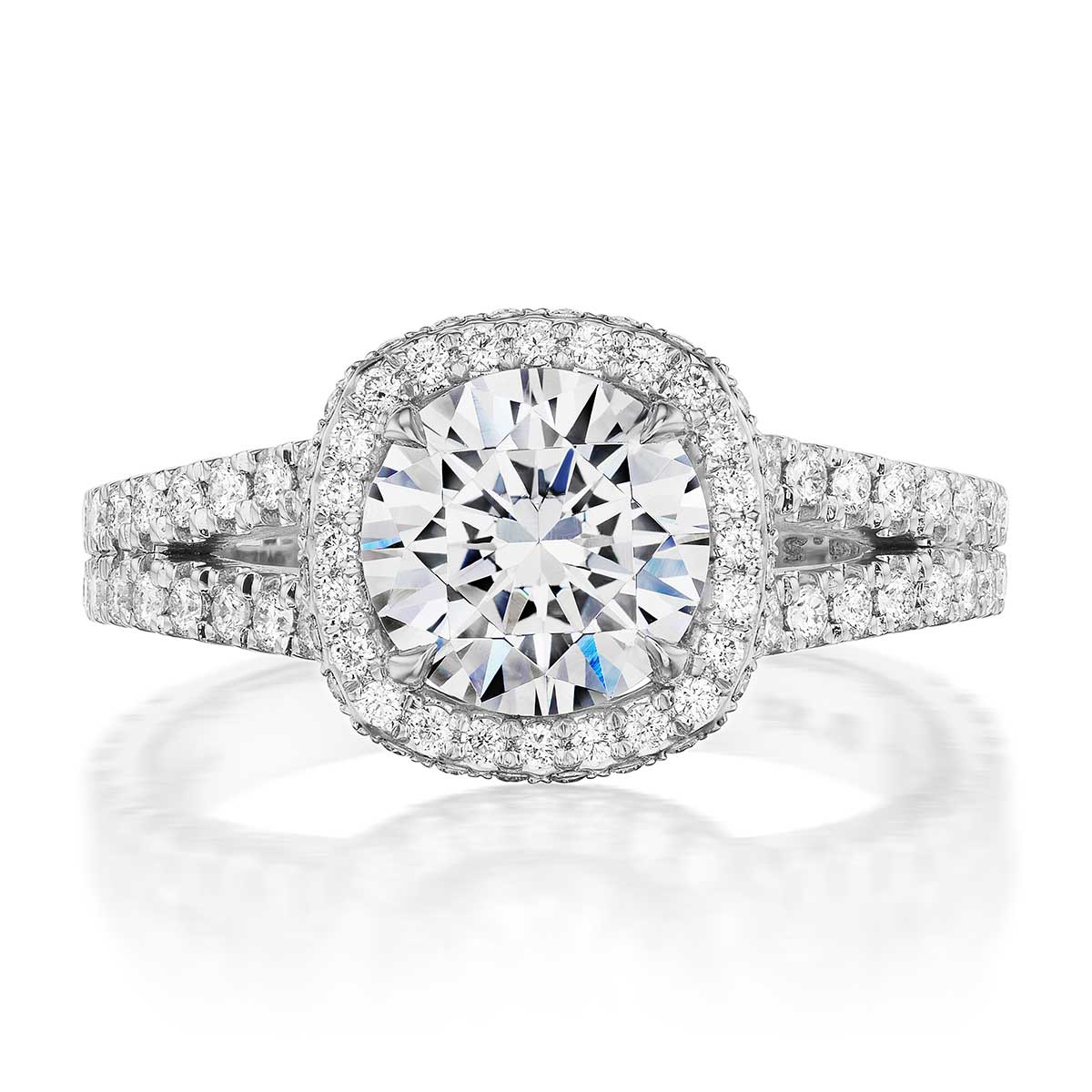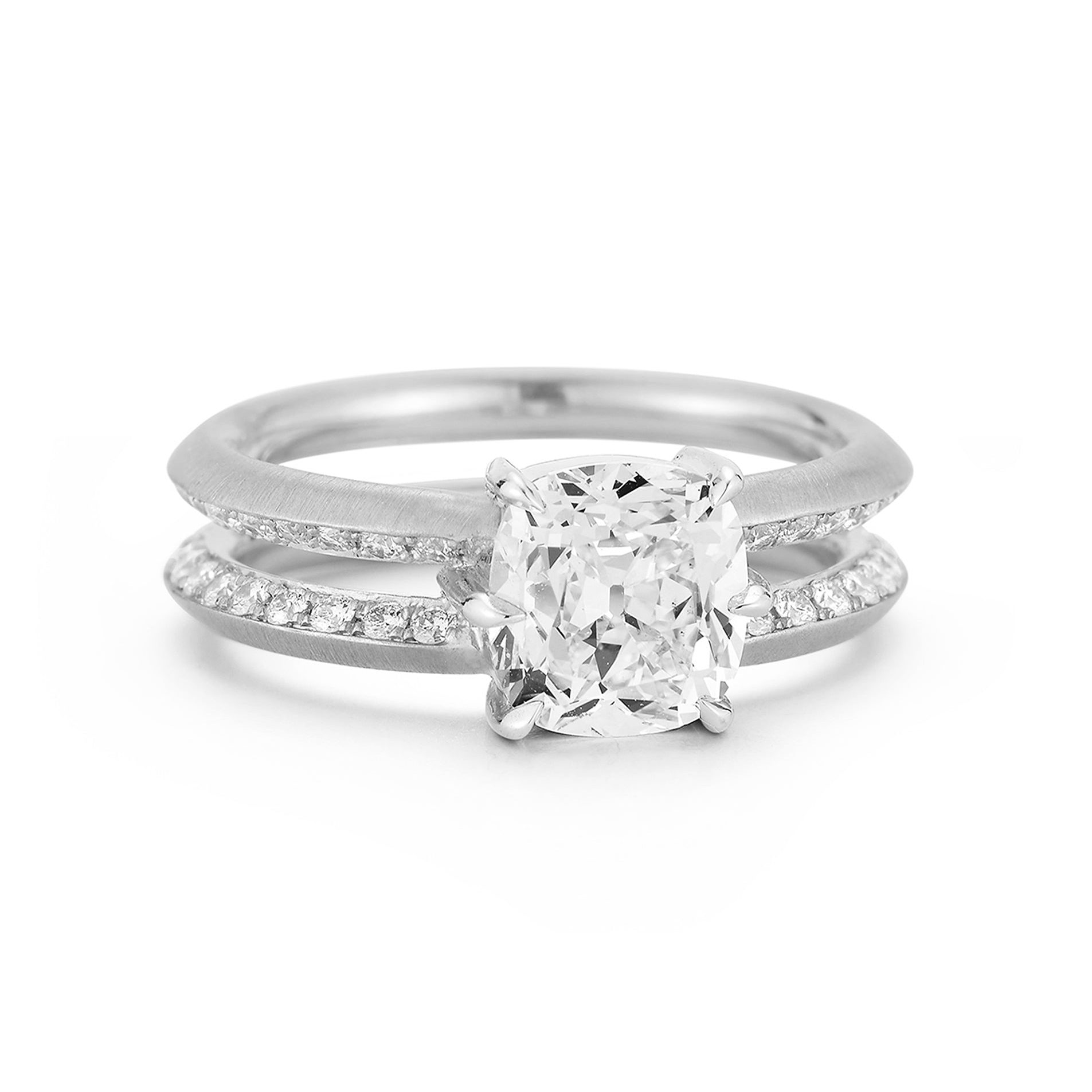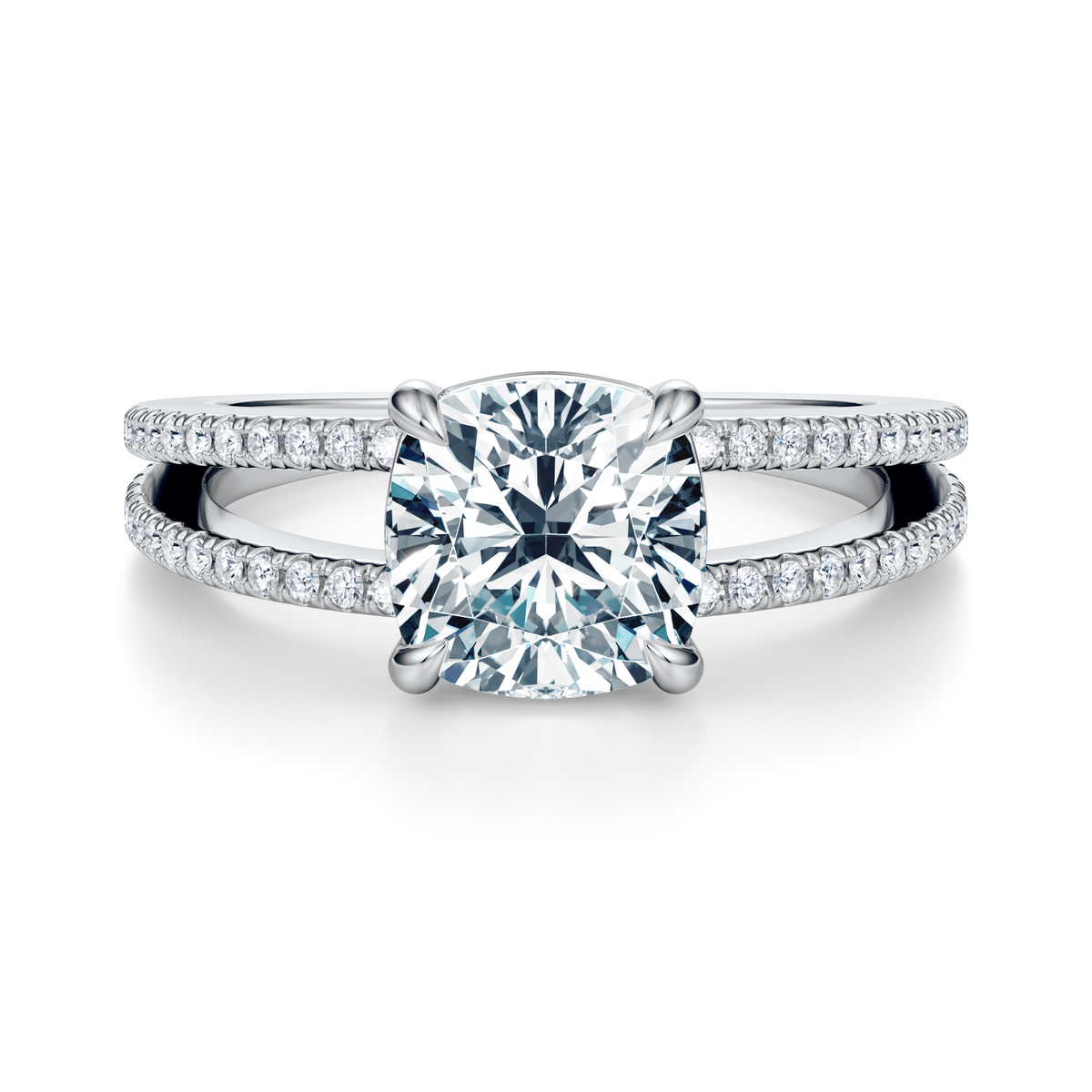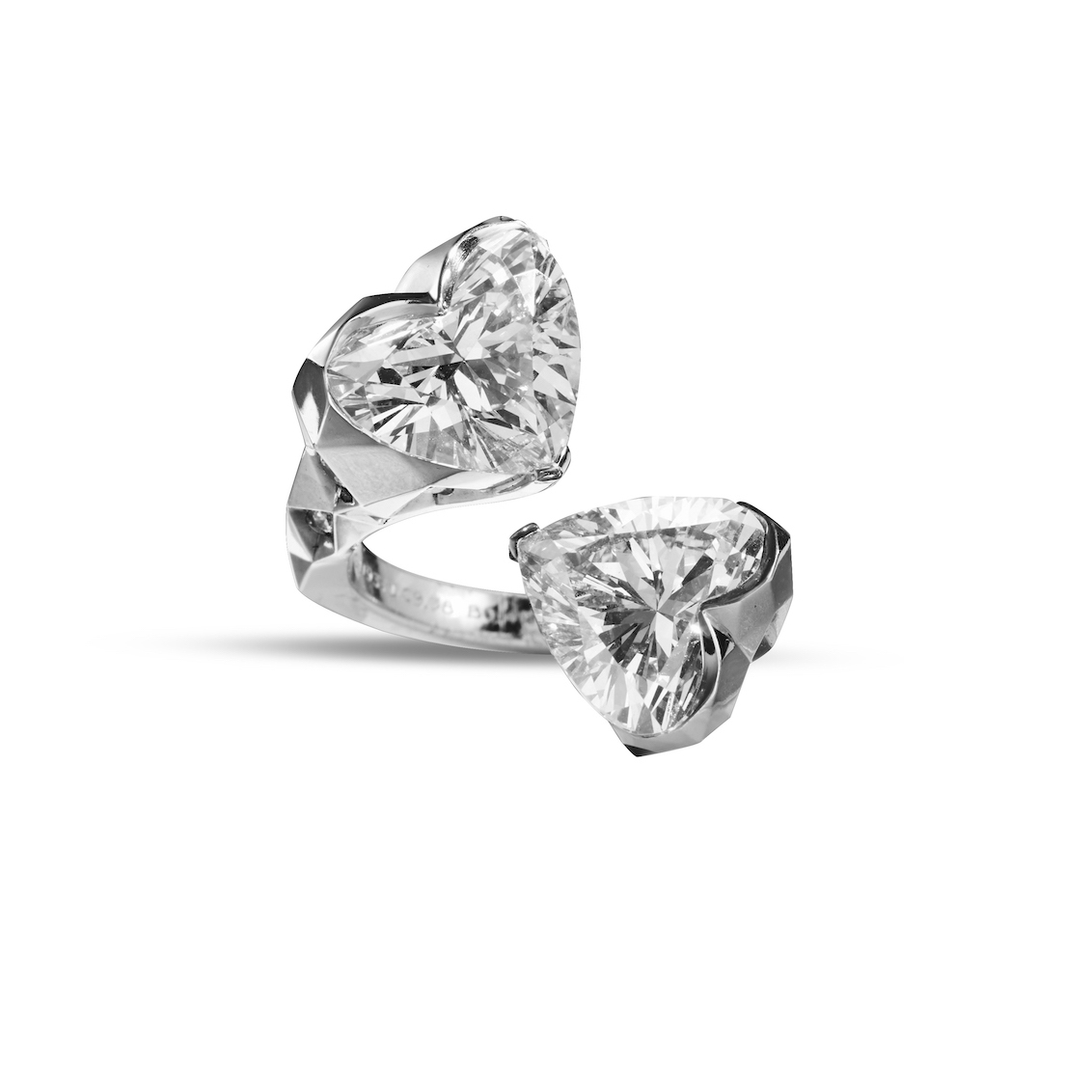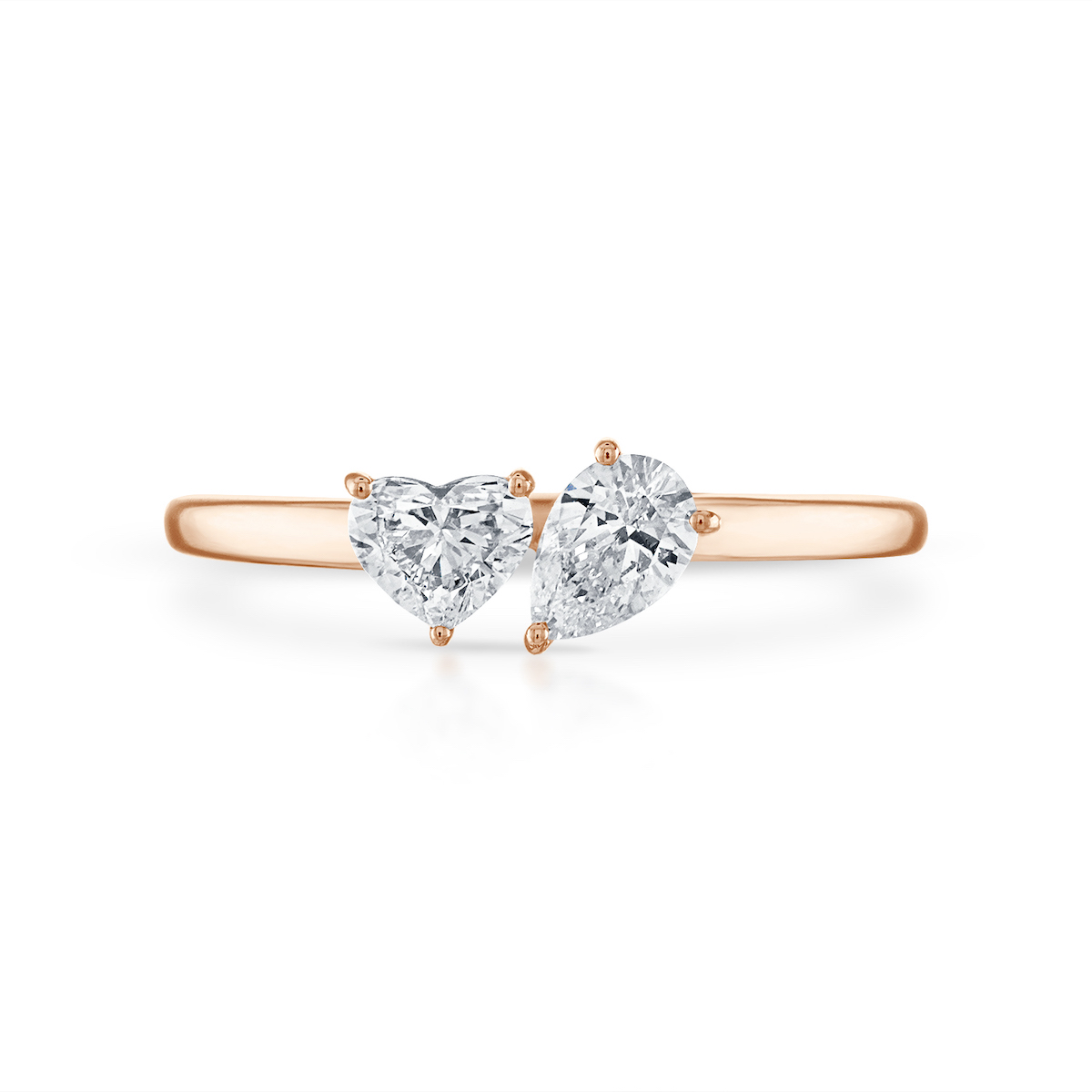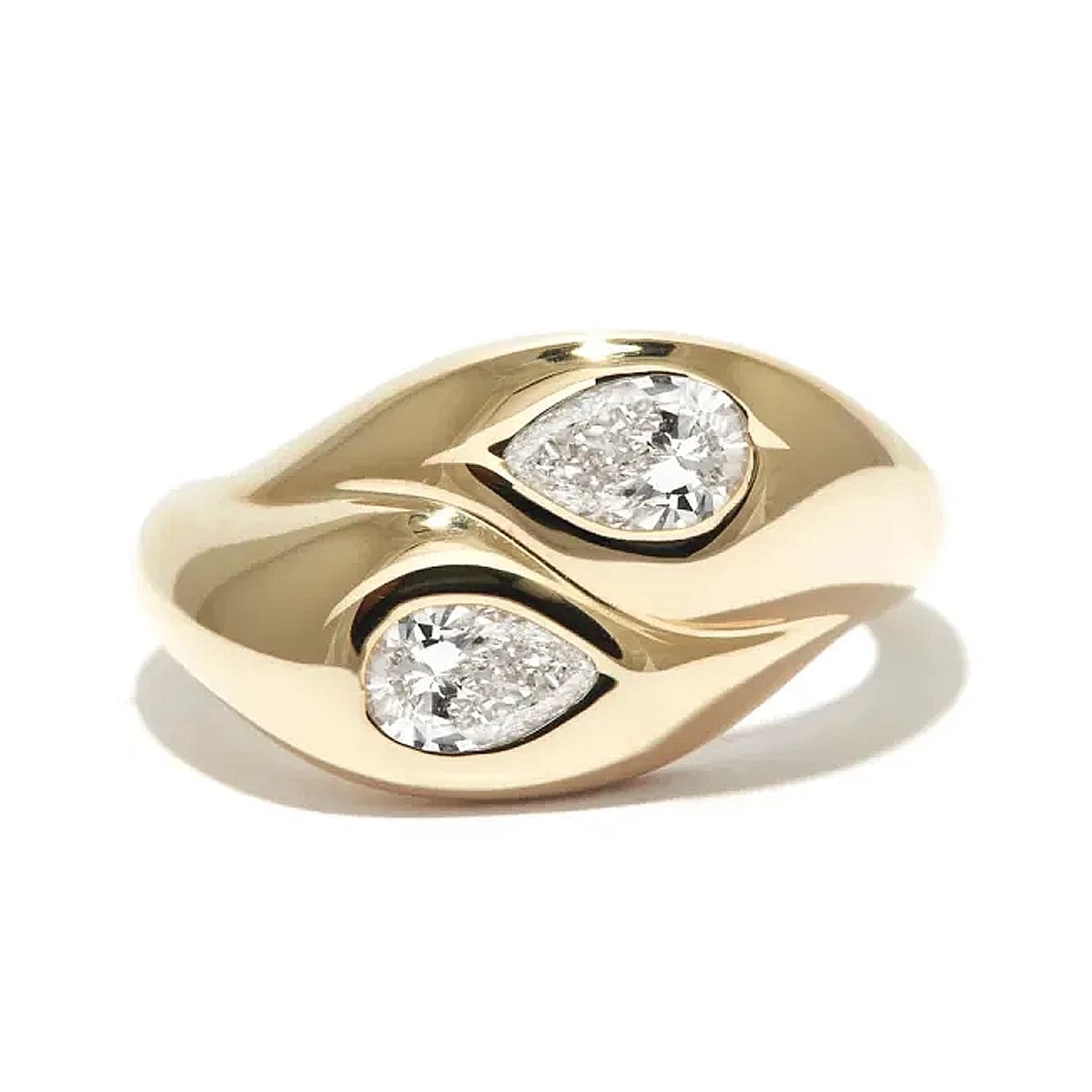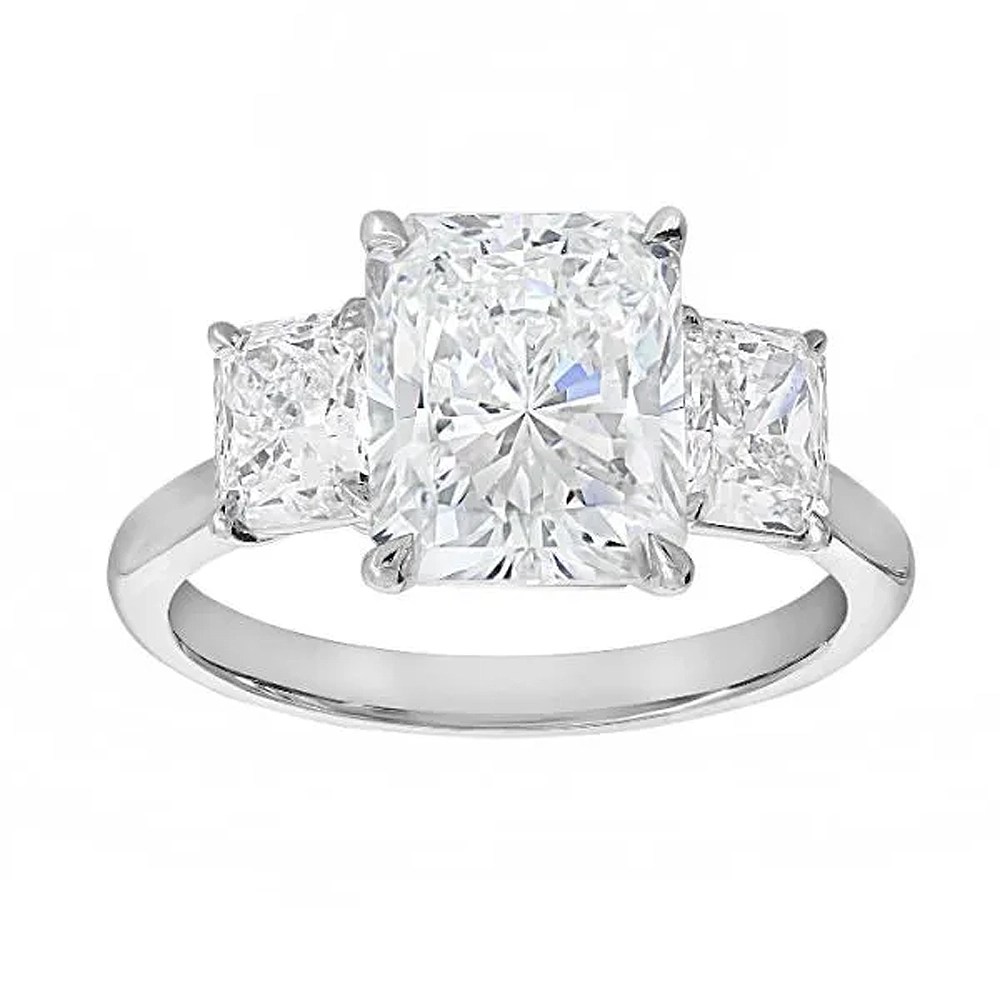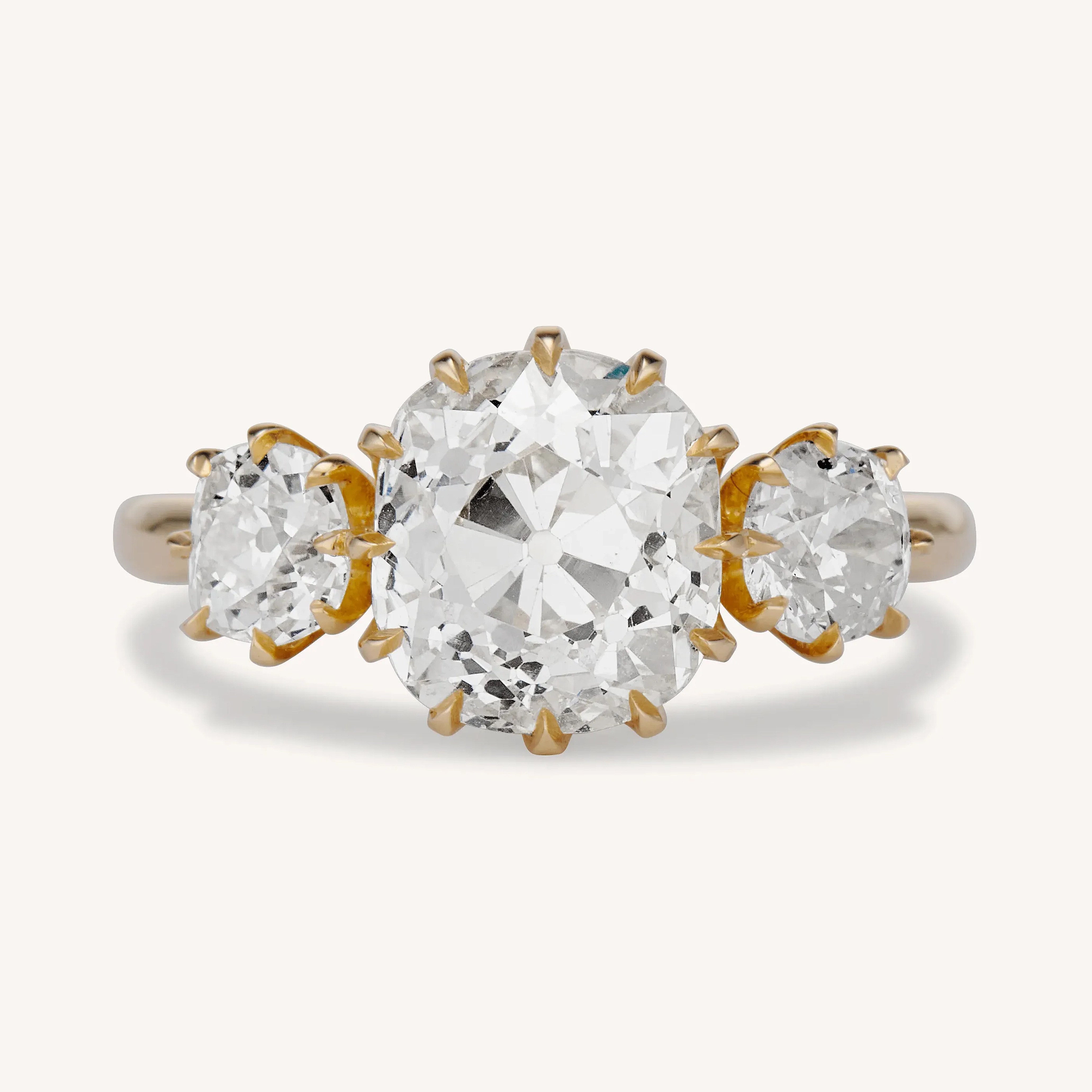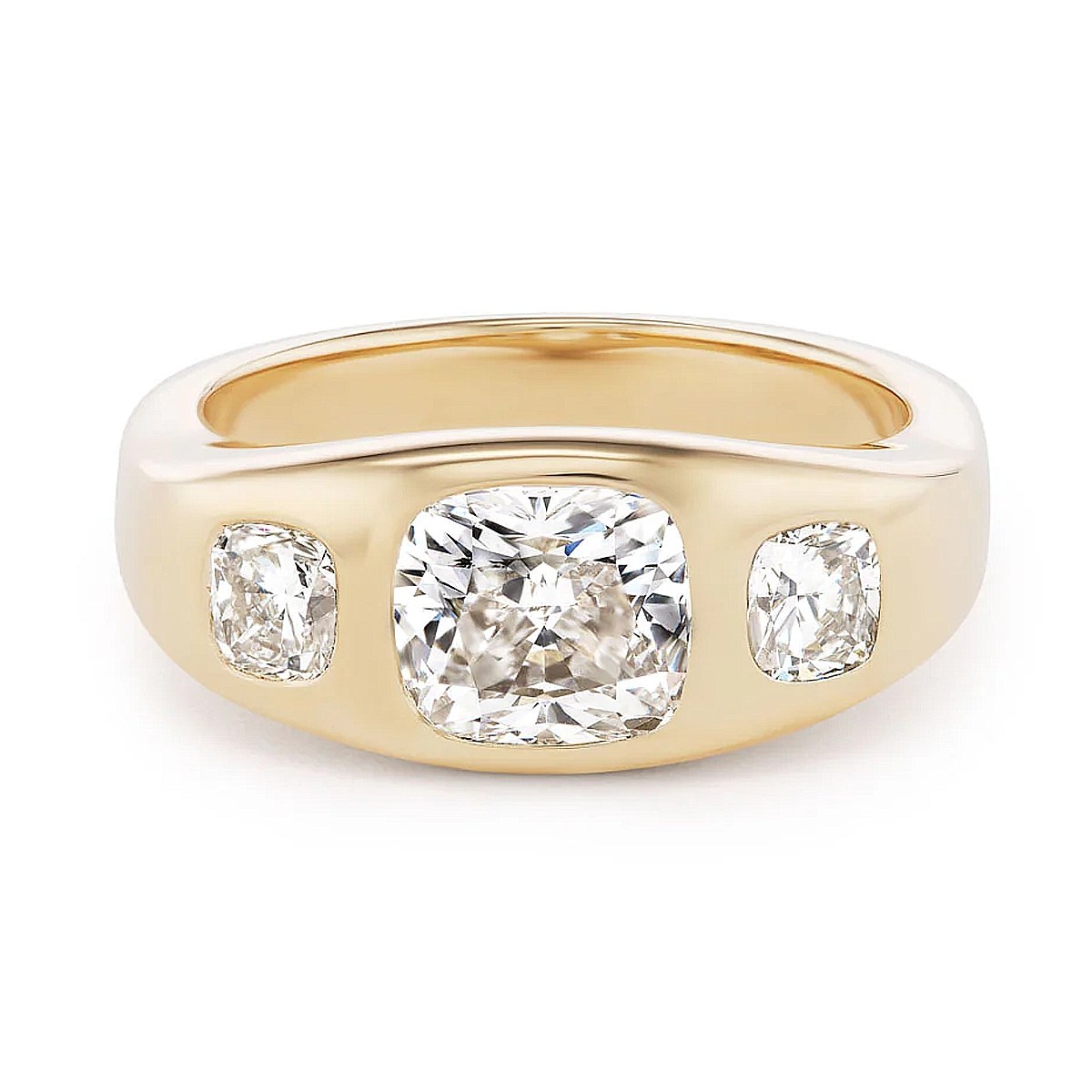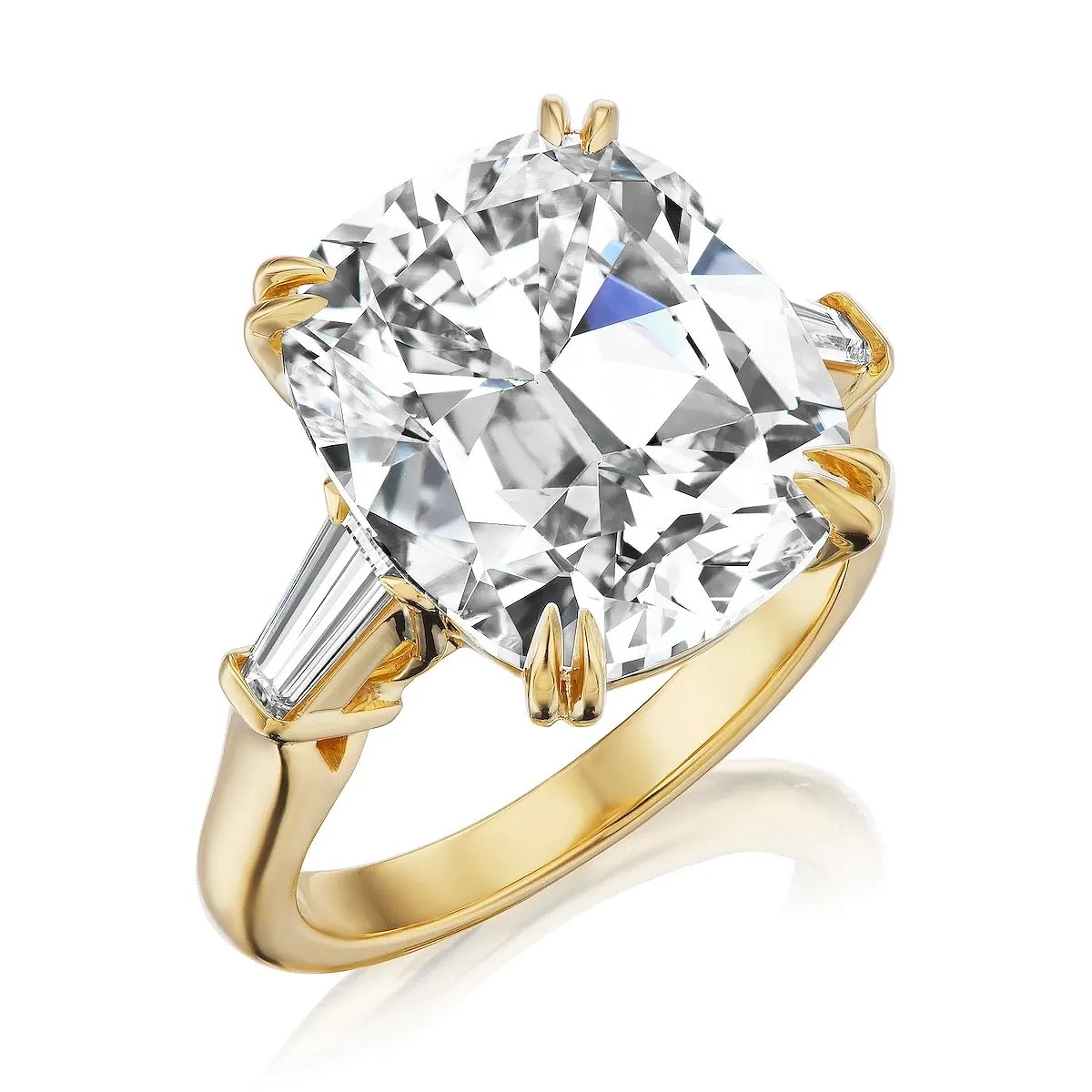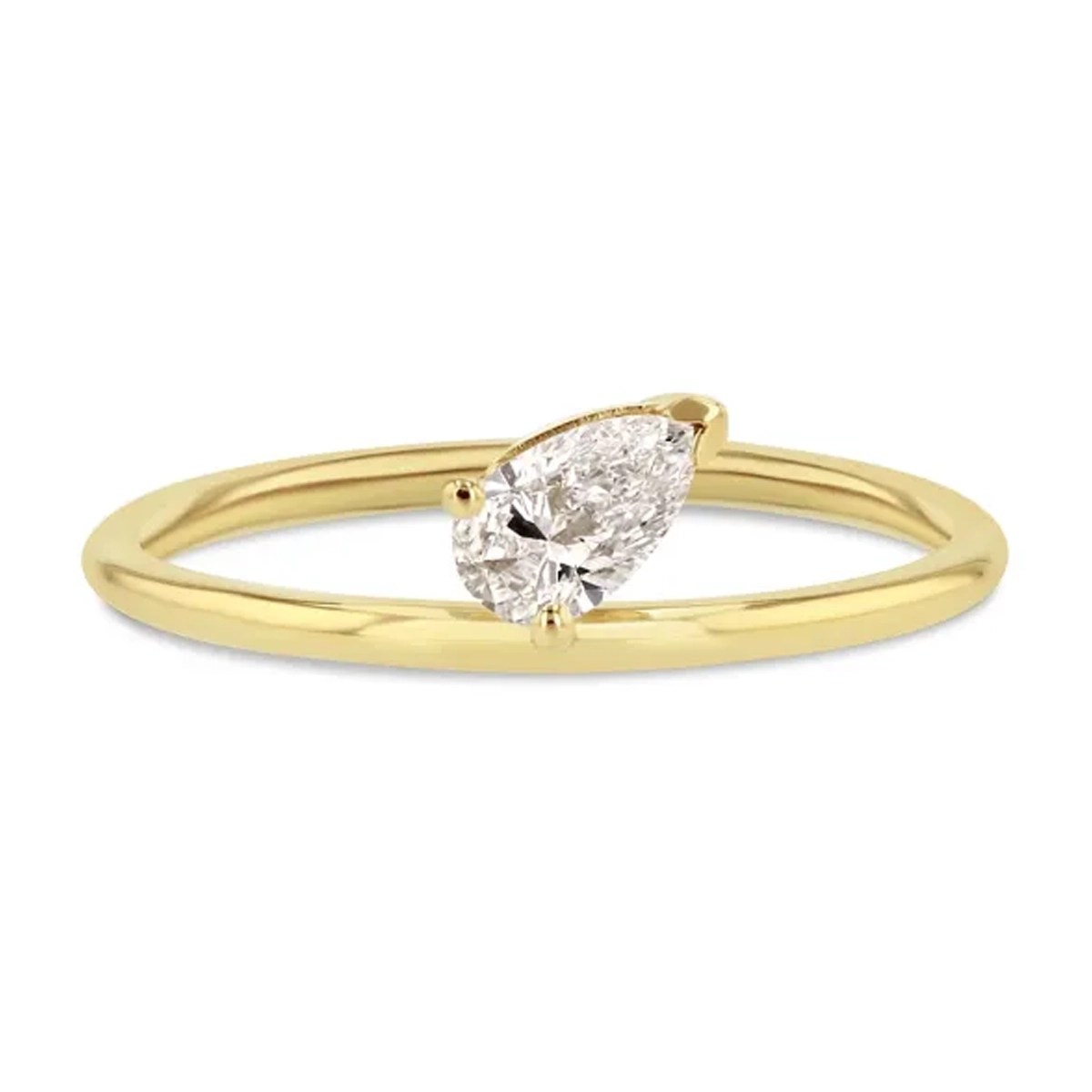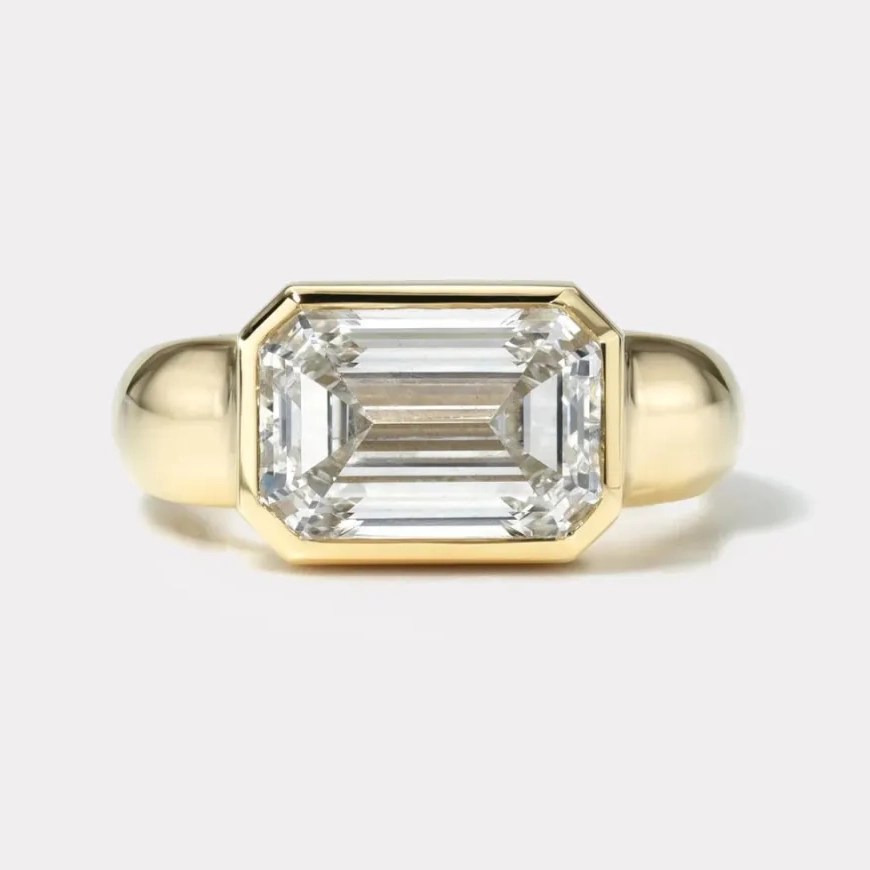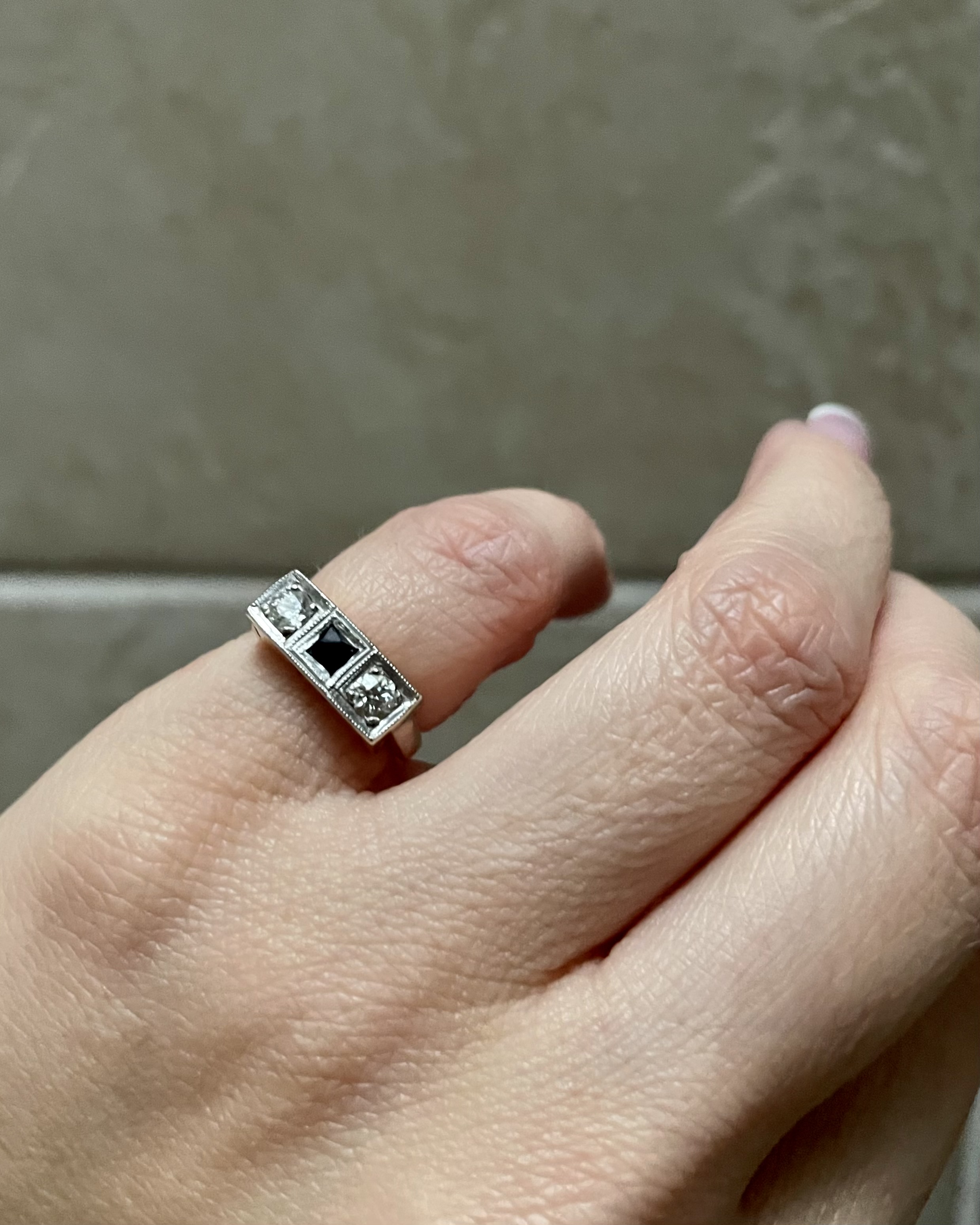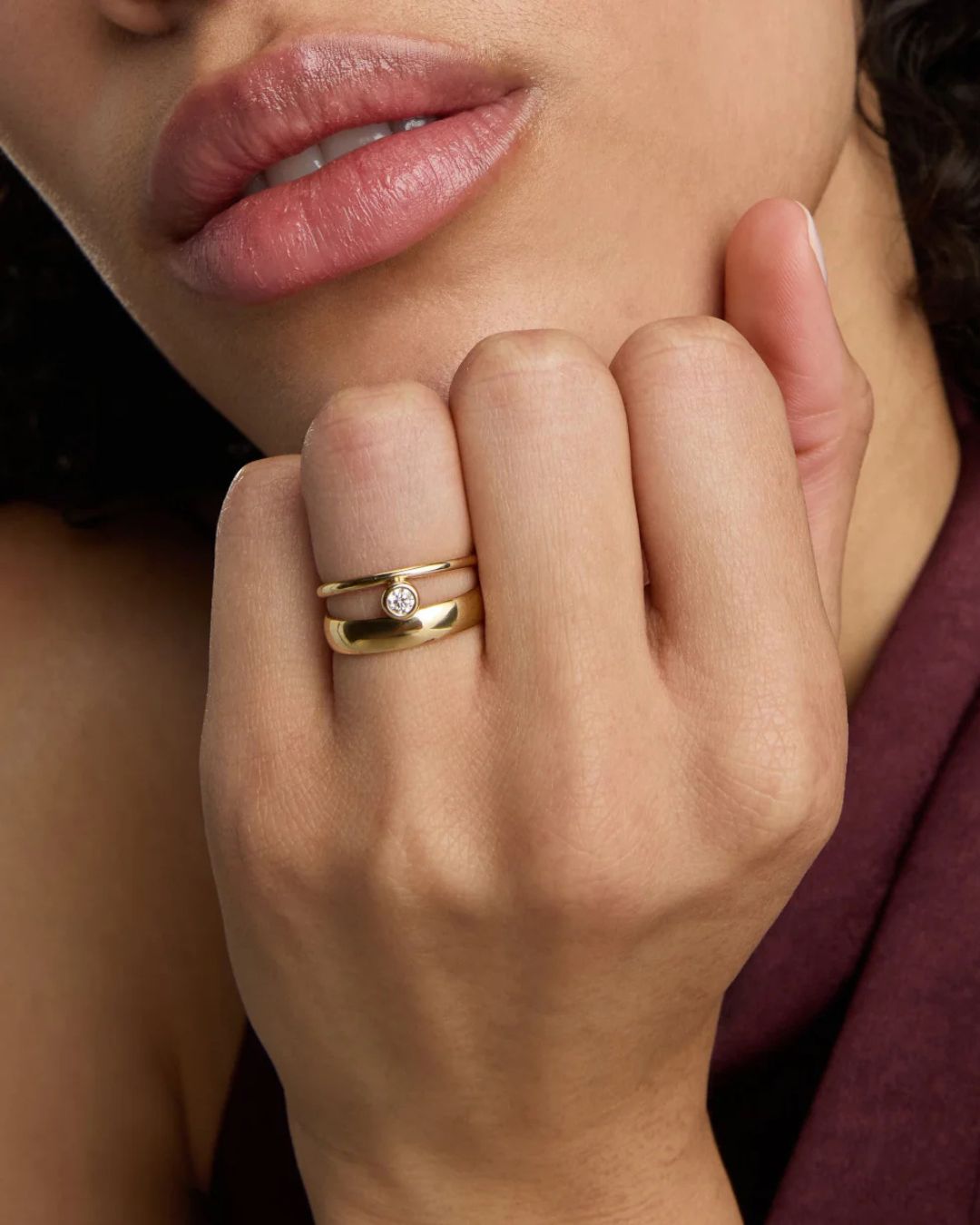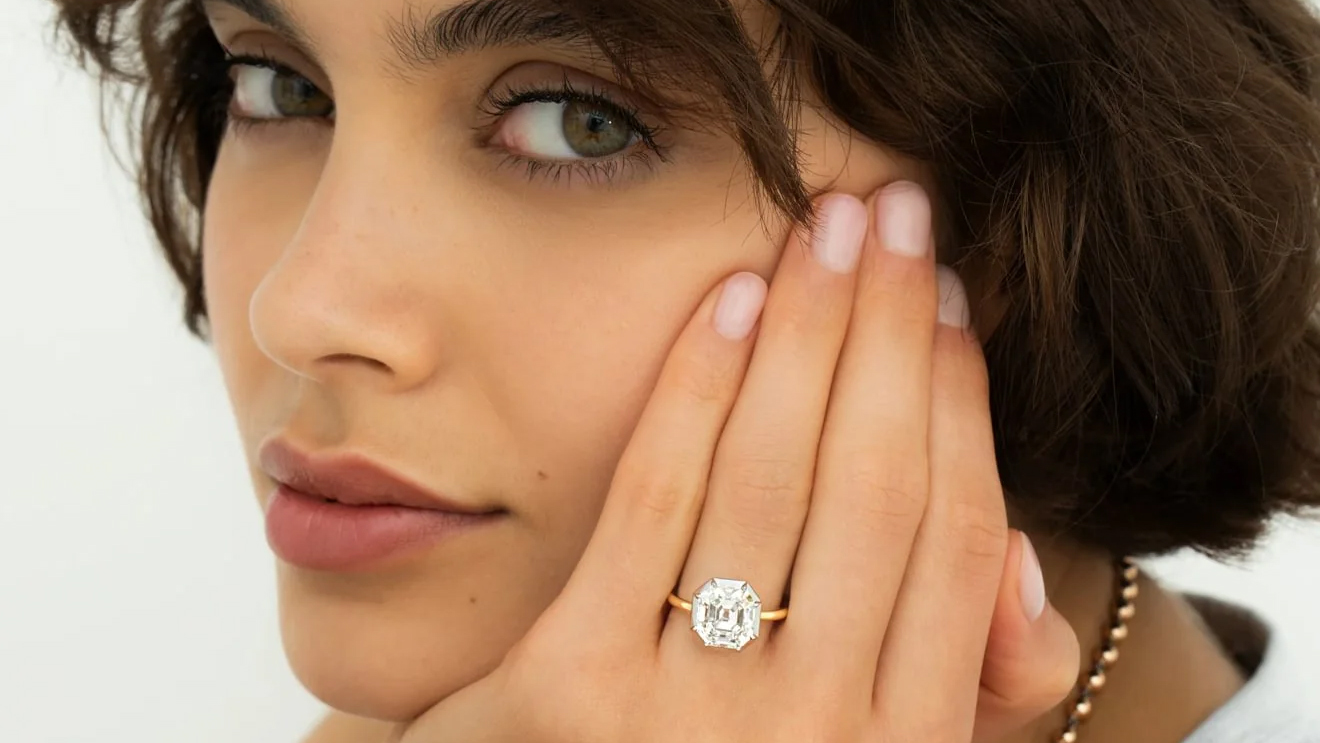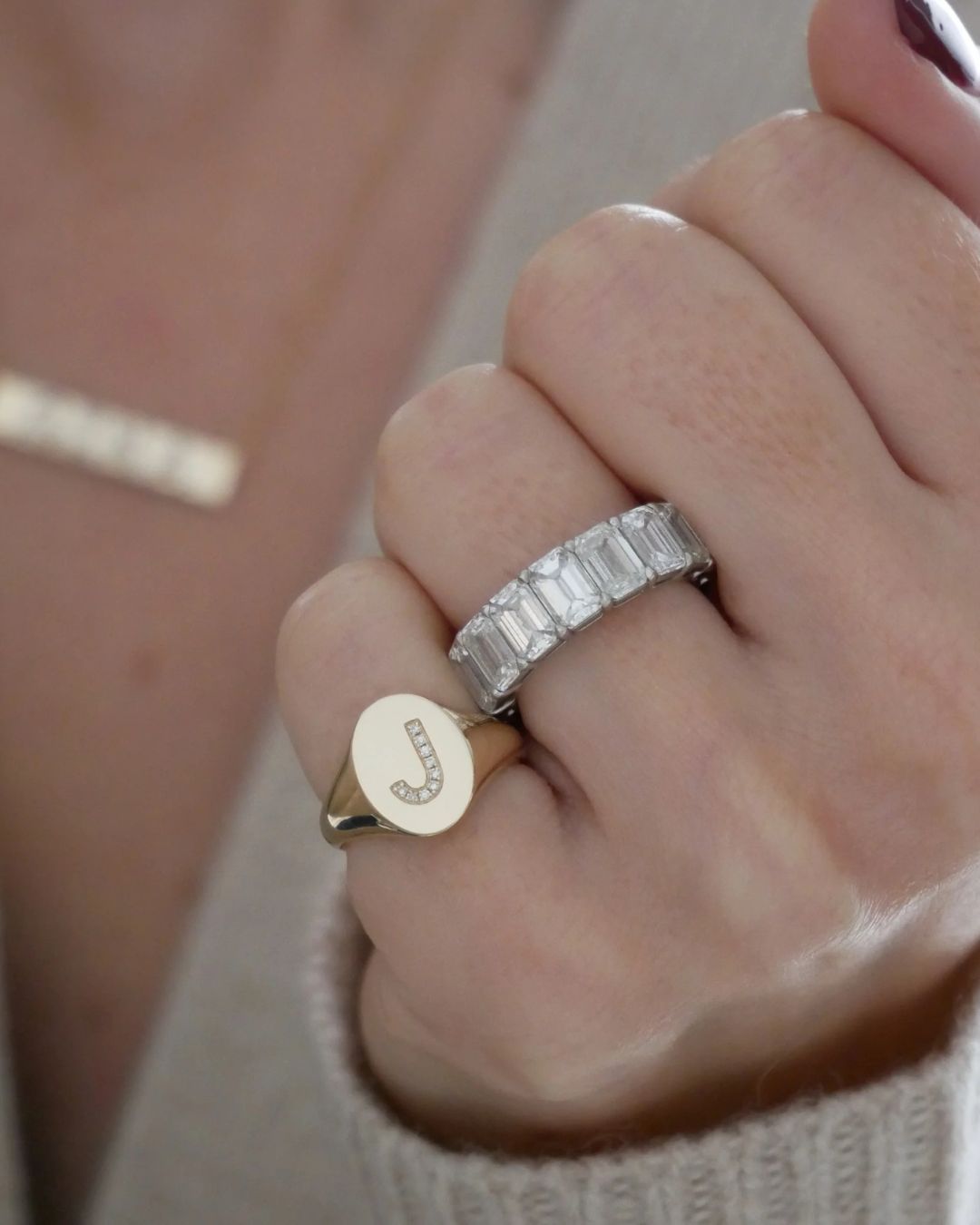The best engagement ring settings complement your personal style, daily routine, and desired level of sparkle. Whether you’re drawn to the timeless simplicity of a solitaire, the eye-catching brilliance of a halo, or the contemporary edge of an east-west setting, the right design will enhance your diamond and suit your everyday life.e
Types of Engagement
Ring Settings
From classic solitaires to modern bezel settings, the way a diamond is set can completely transform its look and feel. Whether you’re into vintage-inspired details or sleek minimalism, there’s a setting style to match every kind of sparkle obsession. Ahead, find definitions of the most popular engagement ring settings.
Solitaire Diamond Engagement Ring Setting
A solitaire setting is the ultimate classic when it comes to engagement ring settings. Defined by a single diamond mounted on a band without any additional stones, this timeless style puts all the focus on the center stone. Whether held in place with prongs or a sleek bezel, it allows the diamond to capture maximum light. As one of the most popular engagement ring settings, the solitaire is a perfect choice for those who appreciate pure, understated elegance.
4-Prong Diamond Engagement Ring Setting
In this setting, the center diamond is held in place by four prongs, positioned at the cardinal points (north, south, east, and west). One of the most minimalist engagement ring settings, it allows maximum light exposure, enhancing the diamond’s brilliance. The 4-prong setting is particularly popular for diamonds under 1 carat and shapes like princess, Asscher, and emerald cut diamonds.
6-Prong Diamond Engagement Ring Setting
The 6-prong engagement ring setting offers added security compared to the 4-prong style, making it a popular choice for round diamonds. With six evenly spaced prongs, this setting provides balanced coverage while still allowing plenty of light to pass through the stone, enhancing its brilliance. Ideal for those who want both sparkle and protection, the 6-prong design has a storied history—it was first introduced by Tiffany & Co. in 1886 with the now-iconic Tiffany® Setting. Designed to lift the diamond off the band, it allowed the stone to shine from every angle—a revolutionary concept that forever transformed engagement ring settings.
Bezel Diamond Engagement Ring Setting
Among the most modern and practical engagement ring settings, the bezel setting surrounds the center diamond with a thin metal rim, securely holding it in place. This sleek style offers exceptional protection against damage and snagging, making it ideal for those with active lifestyles. Bezel engagement ring settings come in two main styles: full, where the diamond is completely encased in metal, and partial, which leaves the sides exposed to let in more light and enhance brilliance (more on that below).
Half Bezel Diamond Engagement Ring Setting
A variation of the bezel setting, the half bezel setting partially encircles the diamond, typically covering only the sides while leaving the top and bottom exposed. This setting provides security while allowing more light to enter the stone, offering the best of both worlds.
Halo Diamond Engagement Ring Setting
The halo diamond engagement ring setting features a circle of smaller diamonds or gemstones encircling the center stone, enhancing its brilliance and creating the illusion of a larger diamond. As one of the most sought-after engagement ring settings, the halo design is ideal for those who want maximum sparkle with a touch of timeless elegance.
Double Halo Diamond Engagement Ring Setting
For even more brilliance, the double halo setting features two concentric circles of diamonds or gemstones, creating an even larger and more dramatic look. This is an ideal choice for those who love bold, statement-making engagement ring settings.
Hidden Halo Diamond Engagement Ring Setting
A hidden halo setting places a circle of small diamonds beneath the center stone, subtly enhancing its brilliance without being immediately visible. This modern take on the classic halo diamond engagement ring setting adds a touch of understated sparkle while keeping the focus on the main diamond.
Pavé Diamond Engagement Ring Setting
The pavé setting—named after the French word for “paved”—features small diamonds or gemstones set closely together to create a glittering, continuous surface along the band. Often used as an accent in other engagement ring settings, pavé adds extra brilliance and detail while maintaining a refined, seamless look.
Channel Diamond Engagement Ring Setting
A sleek and modern choice, the channel setting features small diamonds or gemstones set into a metal groove along the band, with no prongs securing them. This creates a smooth, polished surface that enhances durability while maintaining a streamlined look. Often used for wedding bands or as an accent in engagement ring settings, this style is ideal for those who want a low-maintenance yet sophisticated design. Baguette-cut diamonds are a popular choice for channel settings, offering a refined, geometric appeal that complements both classic and contemporary ring designs.
Split Shank Diamond Engagement Ring Setting
A split shank setting features a band that separates into two or more strands as it nears the center diamond, creating an open, airy look that draws the eye toward the stone. This elegant style can range from subtle and delicate to bold and architectural, depending on the width and spacing of the split. Many split shank engagement ring settings also incorporate pavé or channel-set diamonds along the band for added sparkle and dimension. As one of the more distinctive engagement ring settings, the split shank offers both visual interest and timeless appeal.
Toi et Moi Diamond Engagement Ring Setting
The Toi et Moi engagement ring setting, meaning “You and Me” in French, features two diamonds or gemstones set side by side, symbolizing the union of two souls. This romantic design dates back to the late 18th century and gained widespread fame in 1796 when Napoleon Bonaparte proposed to Joséphine de Beauharnais with a sapphire and diamond Toi et Moi ring. Since then, it has remained a timeless favorite among couples seeking a design with historic symbolism. In recent years, this sentimental engagement ring setting has seen a modern resurgence, embraced for its ability to mix different stone shapes and colors.
Three-Stone Diamond Engagement Ring Setting
A three-stone setting is a timeless and deeply symbolic choice, representing the past, present, and future. Featuring a center diamond flanked by two side stones, this design adds depth, dimension, and extra sparkle while maintaining a balanced and sophisticated look. Whether paired with smaller diamonds for a seamless, classic effect or accented with colored diamonds or gemstones for a bold contrast, the three-stone engagement ring setting is as versatile as it is meaningful.
Akimbo Diamond Engagement Ring Setting
A modern and unconventional choice, the akimbo setting positions the center diamond slightly off-center, creating an asymmetrical and artistic design. This setting is perfect for those who appreciate edgy, fashion-forward engagement ring settings.
East-West Diamond Engagement Ring Setting
A fresh twist on the traditional, the east-west setting places the center diamond horizontally rather than vertically. This look is particularly striking for elongated diamond shapes, such as emerald, oval, or marquise-cut diamonds, offering a contemporary and sophisticated aesthetic.
About Natural Diamond Council
Natural Diamond Council (NDC) is the global authority on natural diamonds. As a not-for-profit organization, NDC is committed to advancing the integrity of the natural diamond industry and celebrating the unmatched beauty and value of natural diamond jewelry. NDC serves as the industry’s definitive voice, offering expert insight, trusted education, and unparalleled access to the world of real, rare, and responsibly sourced natural diamonds.


